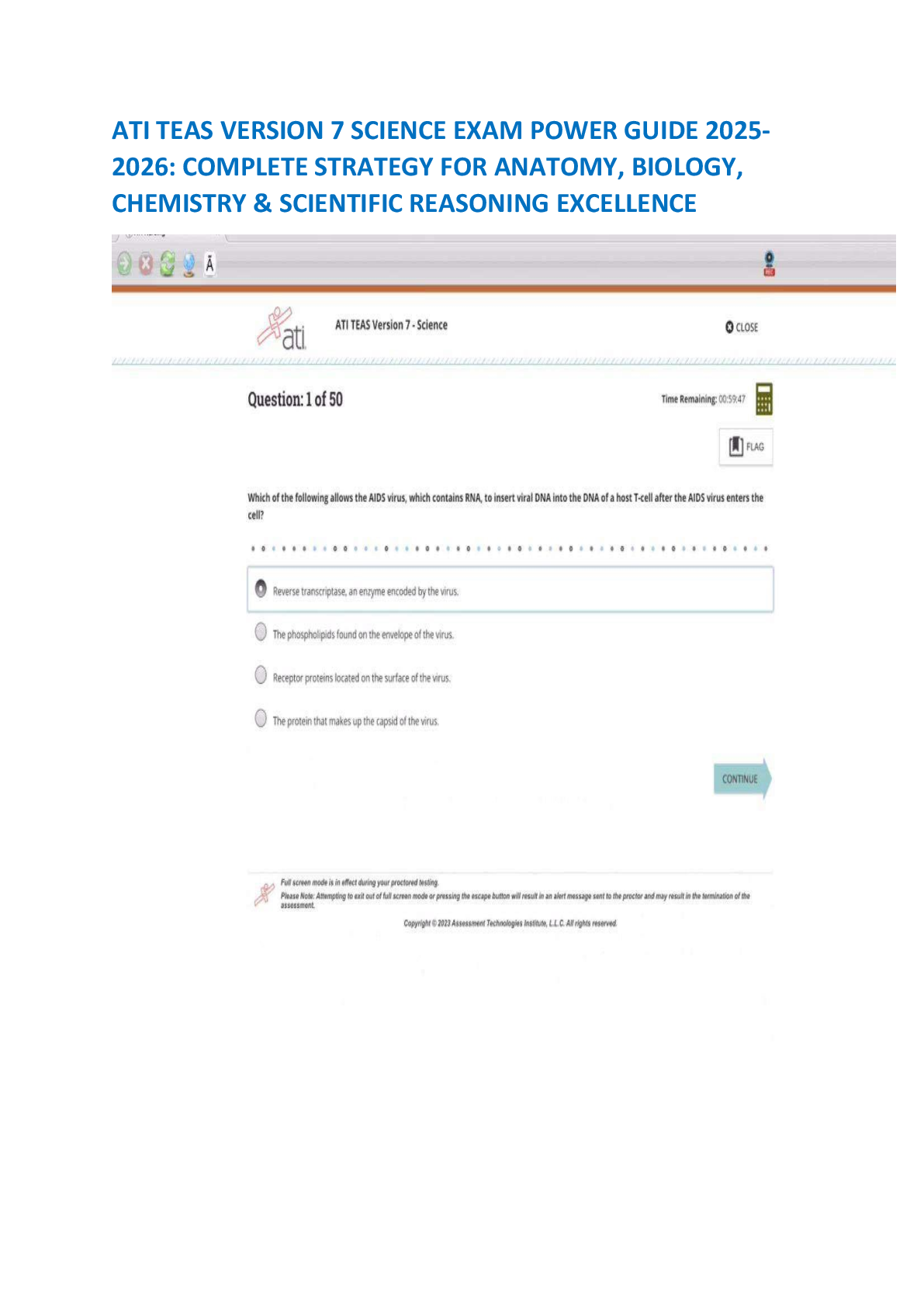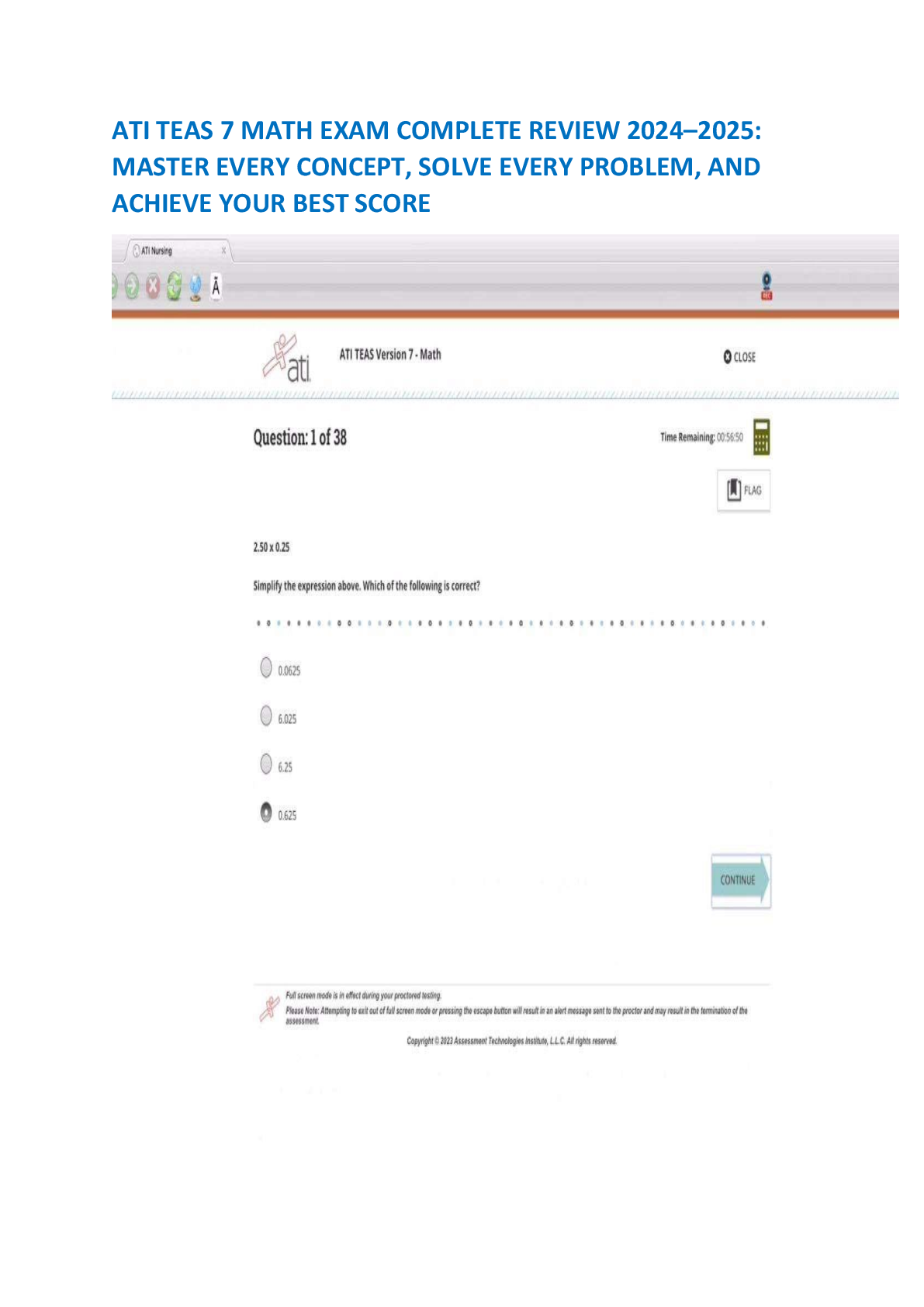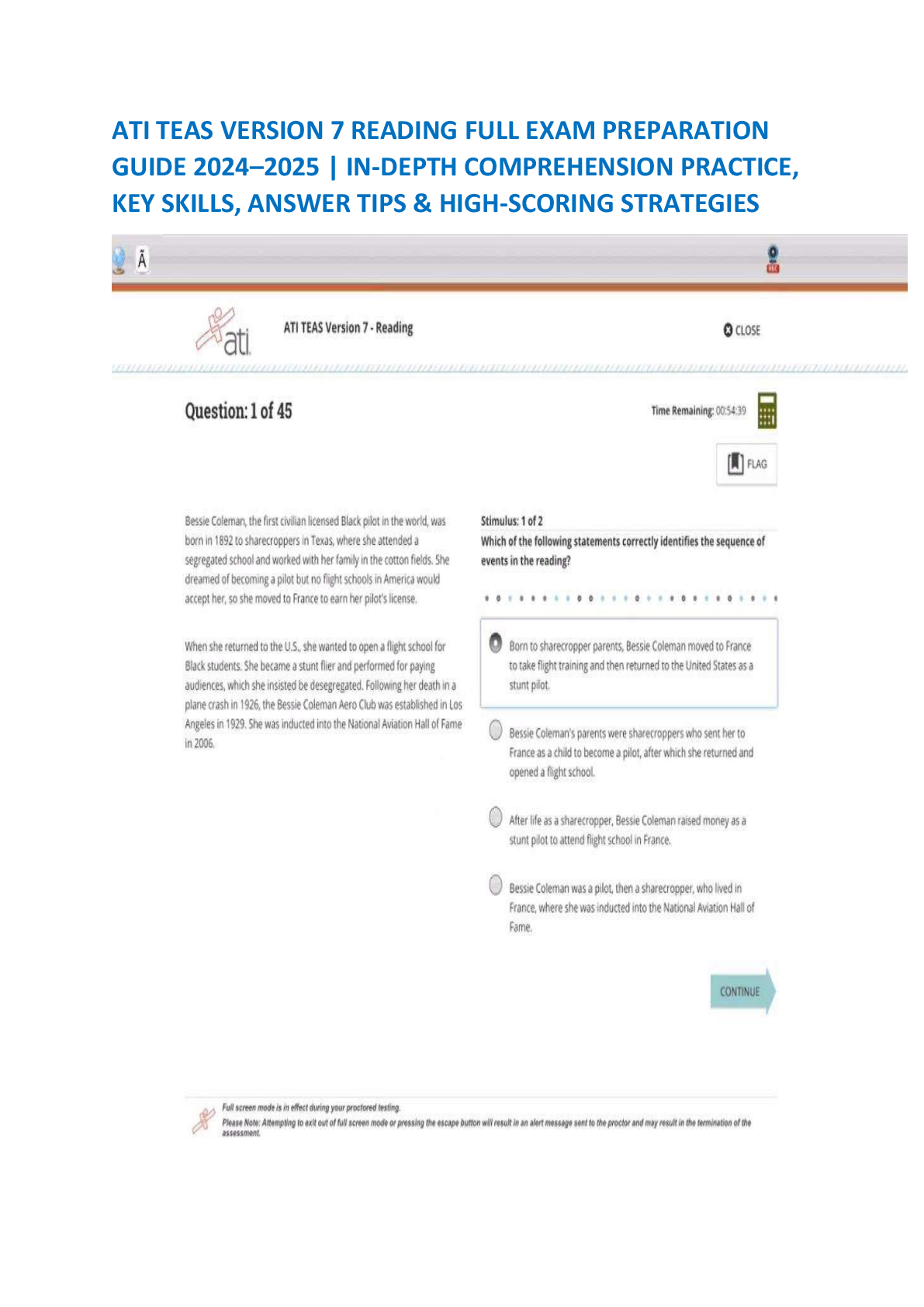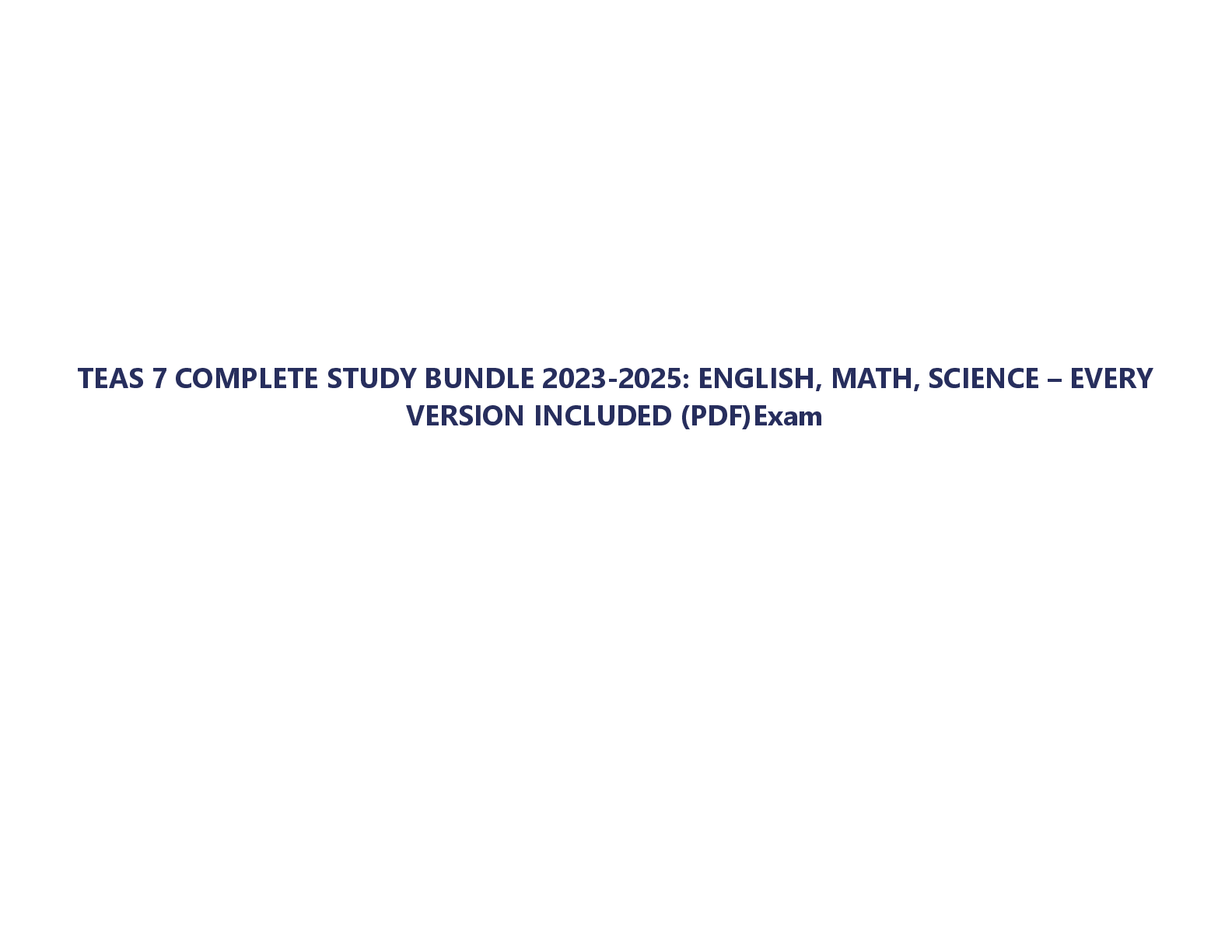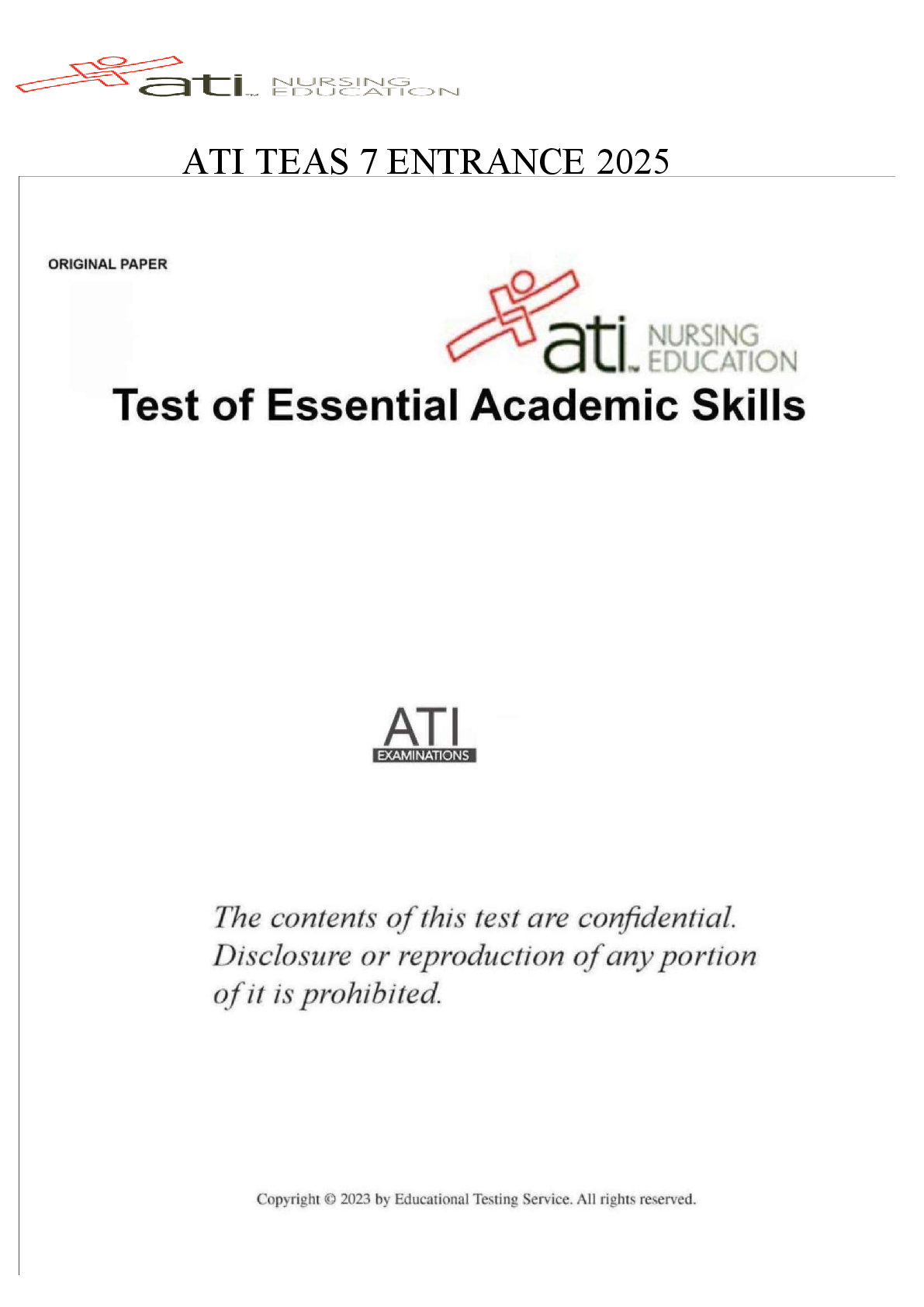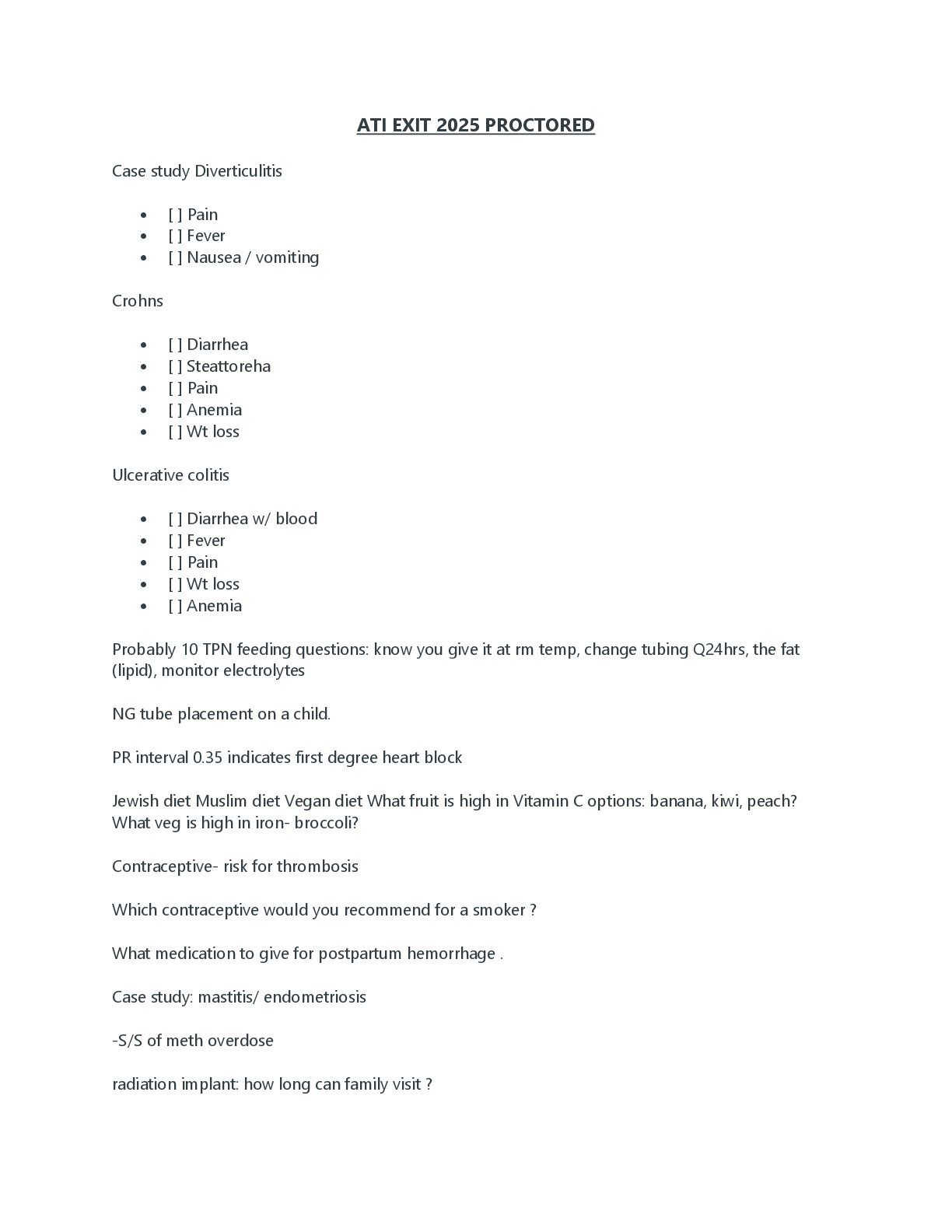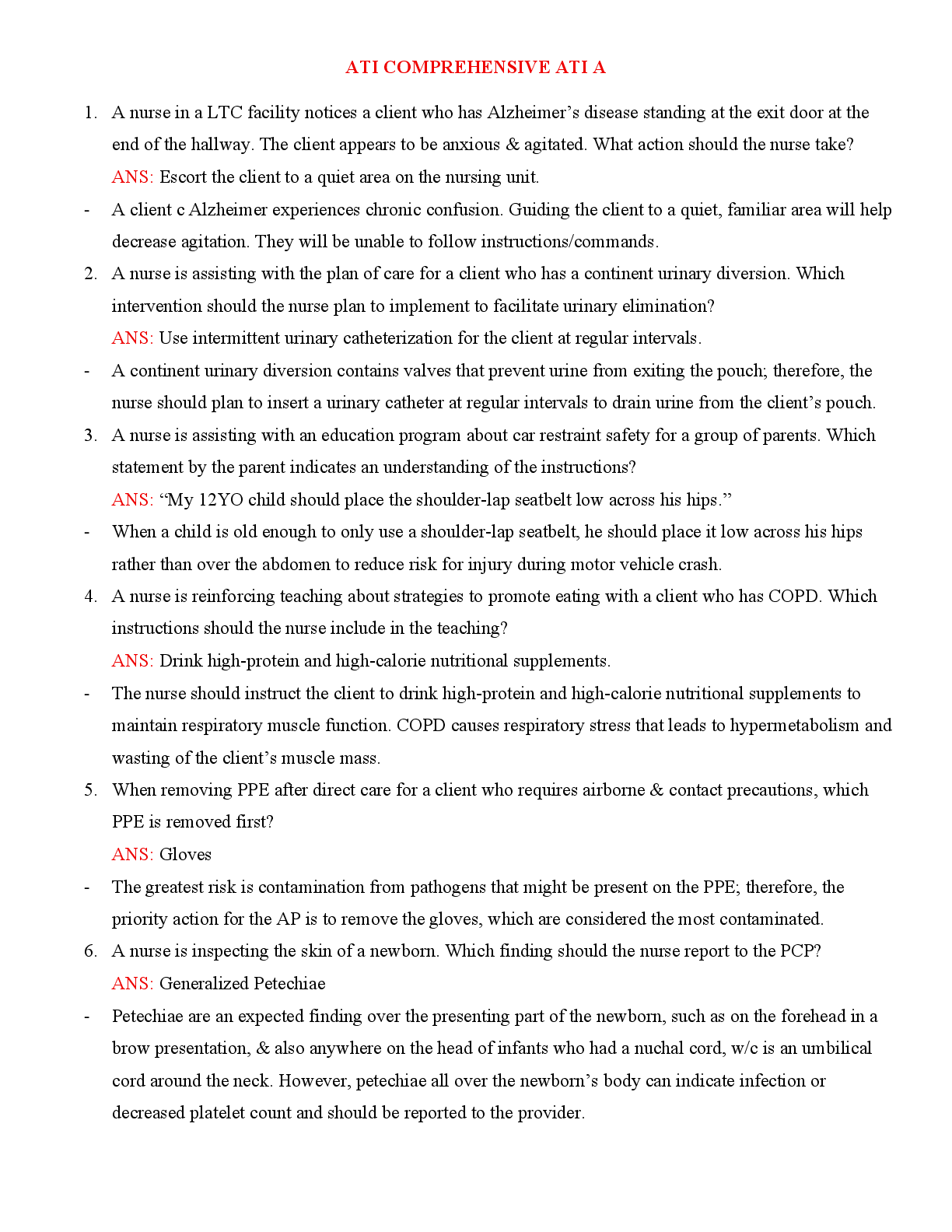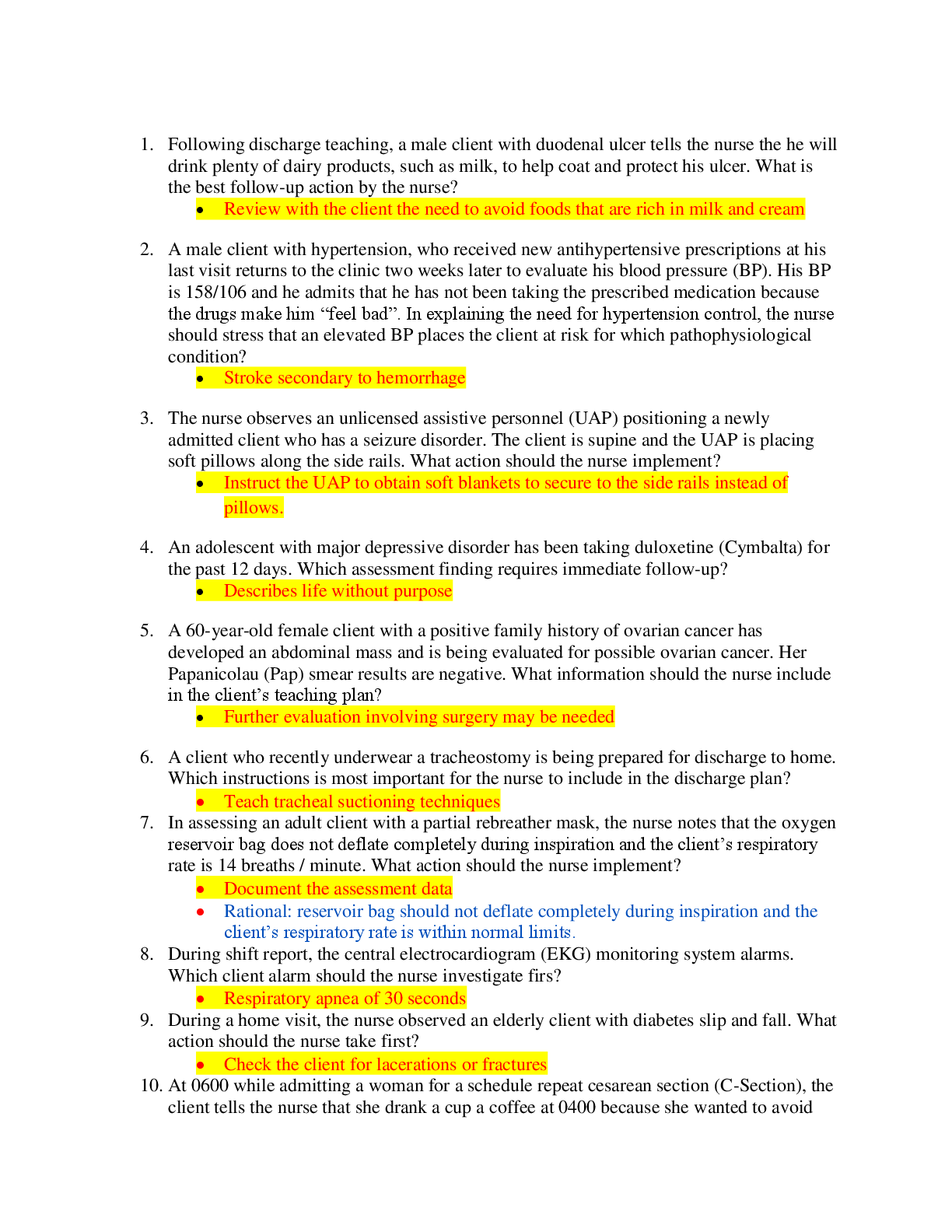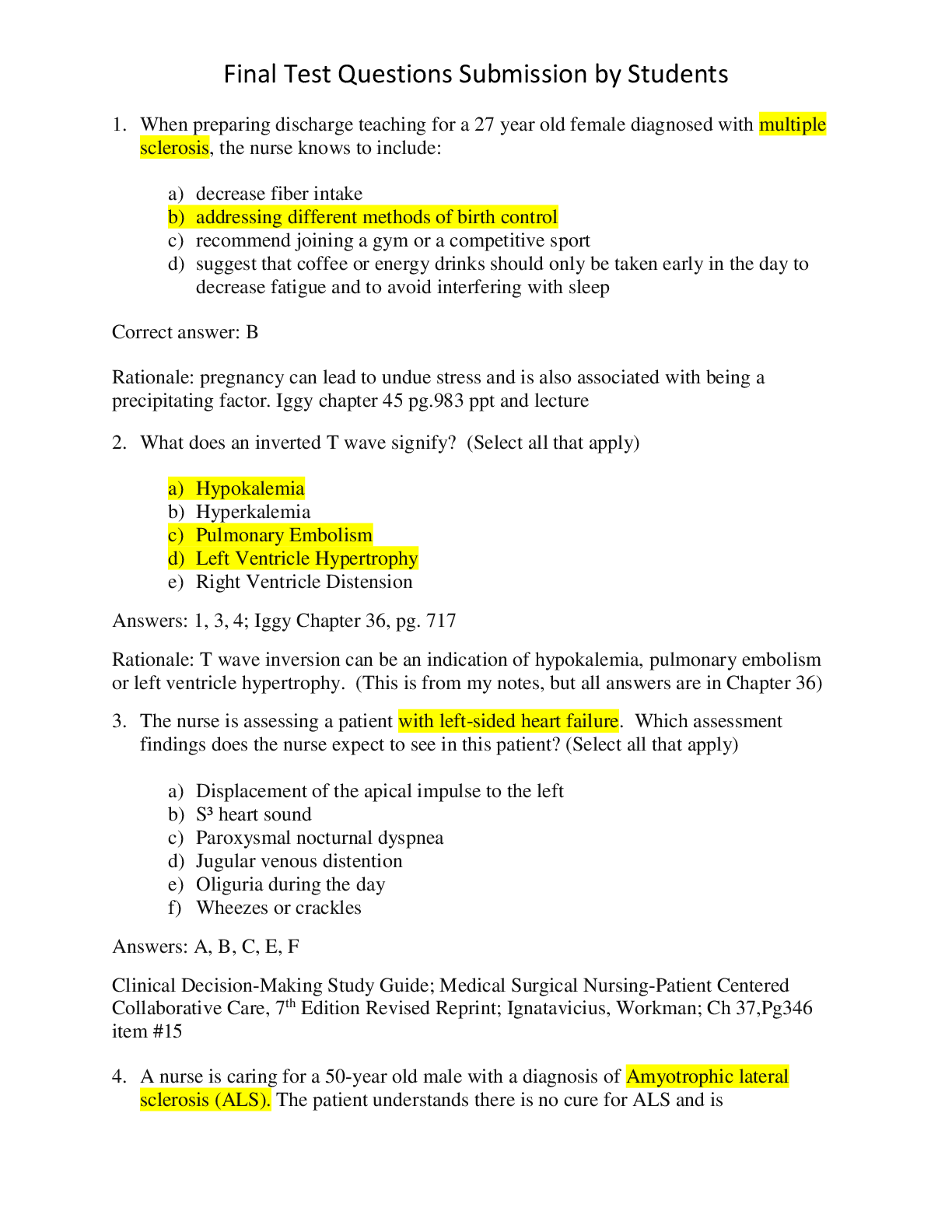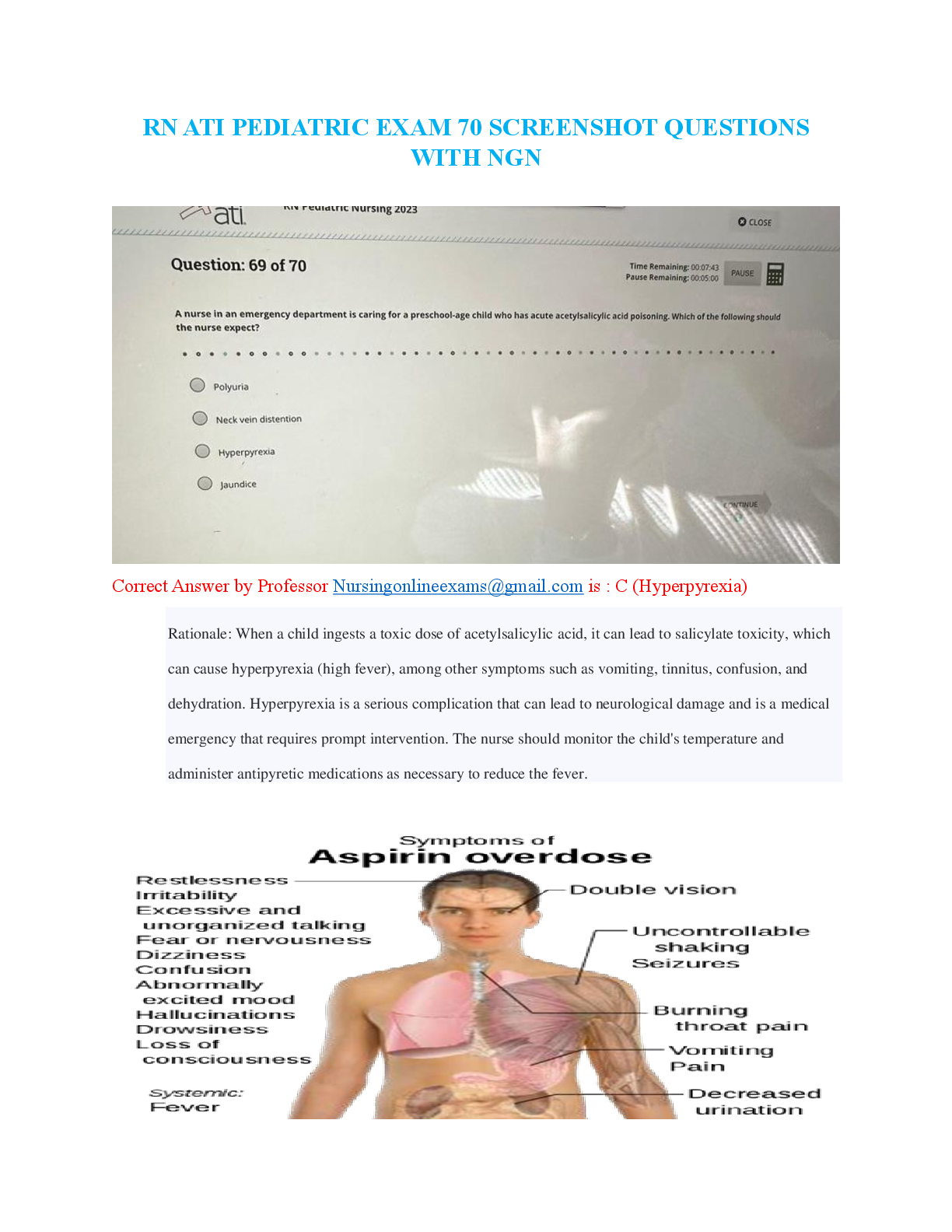
Pearson Edexcel Level 3 GCEOCRArabic PAPER 1: Translation into English, Reading Comprehension and Writing (research question)in ArabicOCRNovember 2021
$ 10
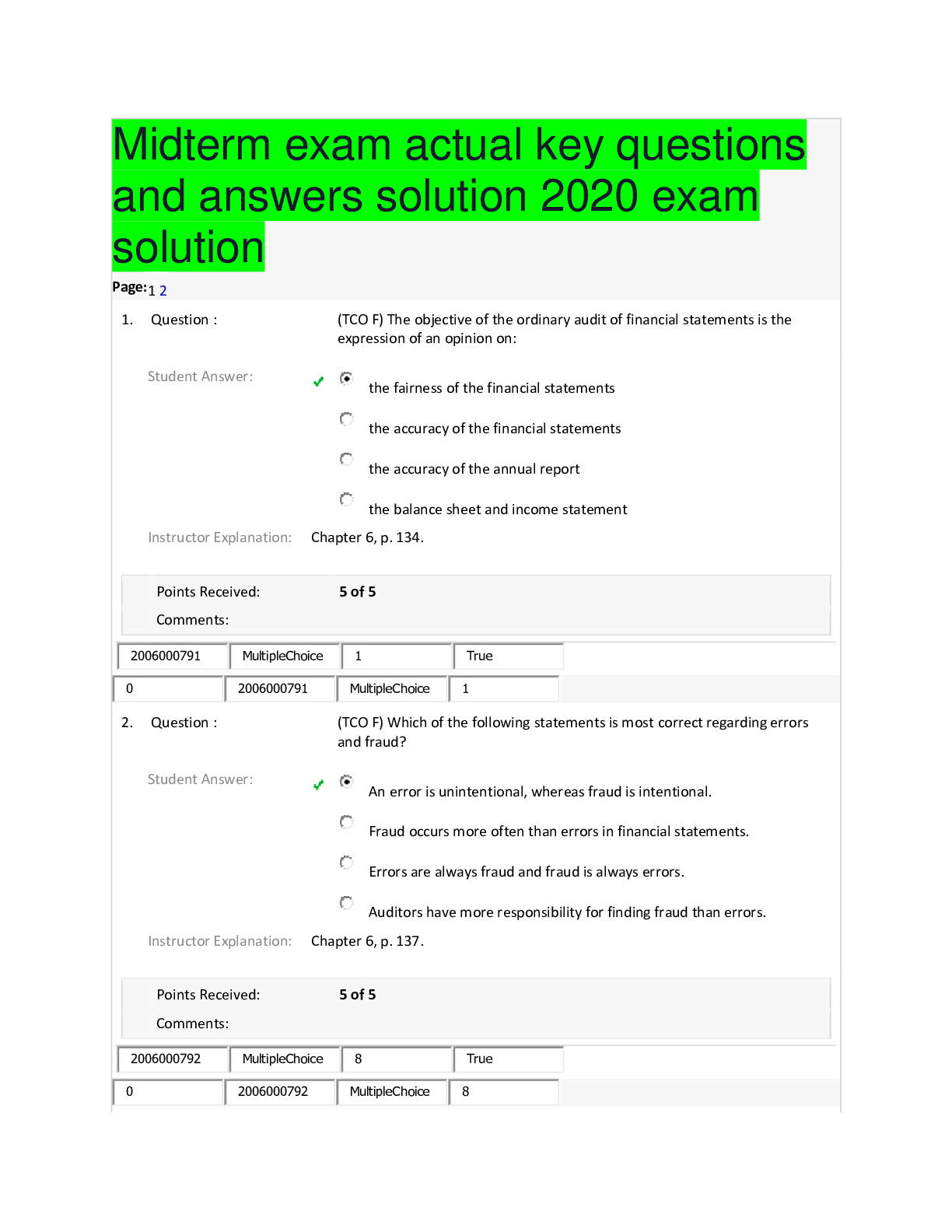
Midterm exam actual key questions and answers solution 2020 exam solution
$ 8
.png)
Primary Professional Military Education PPMEs All Blocks Test Bank. QUESTIONS AND ANSWERS RATED A
$ 20

DTS (Basic) - DTS Travel Documents (DTS 101)
$ 6.5

Right to Work Annotiation Unit 2.docx Right to Work: Breaking the Middle Class C
$ 10
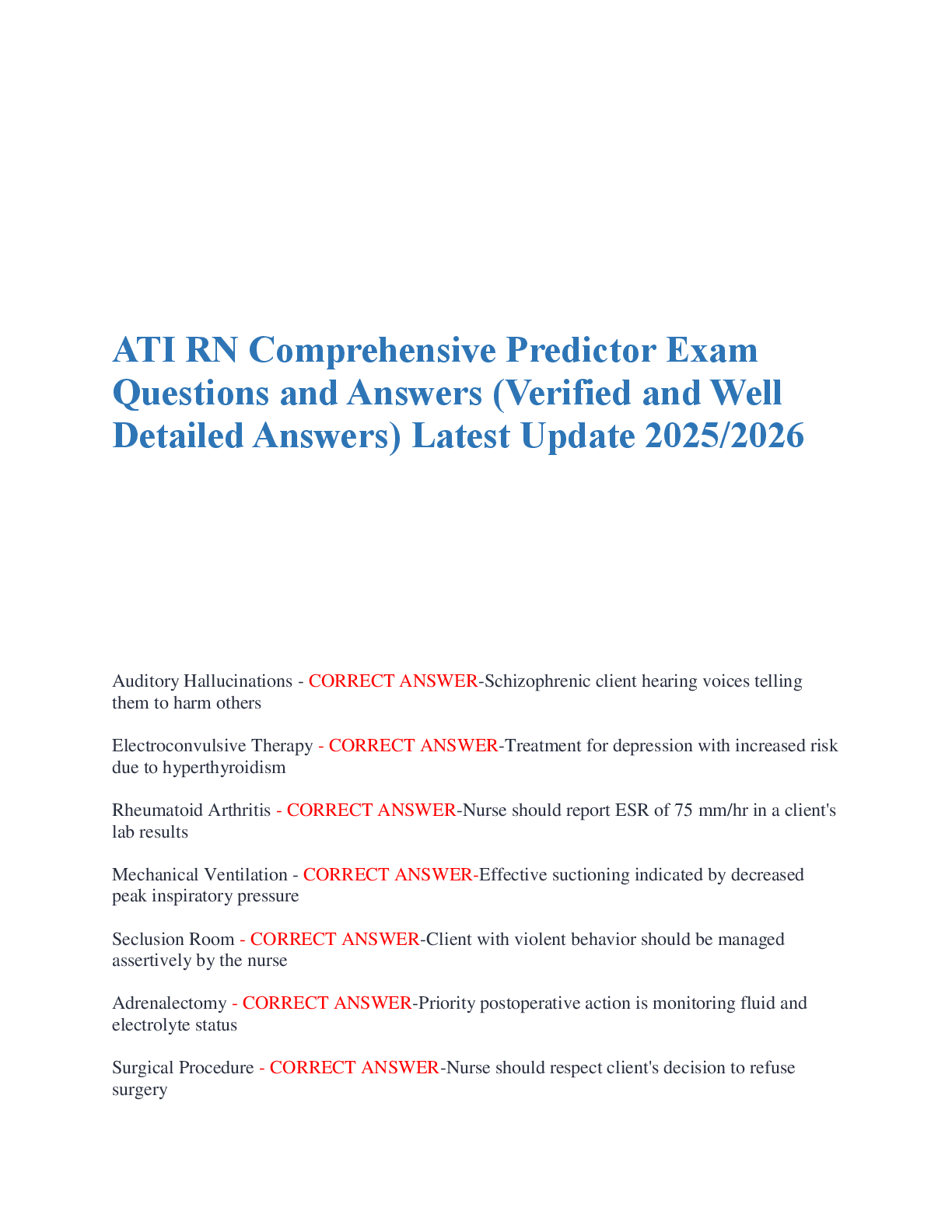
ATI RN Comprehensive Predictor Exam Questions and Answers (Verified and Well Detailed Answers) Latest Update 2025/2026
$ 20
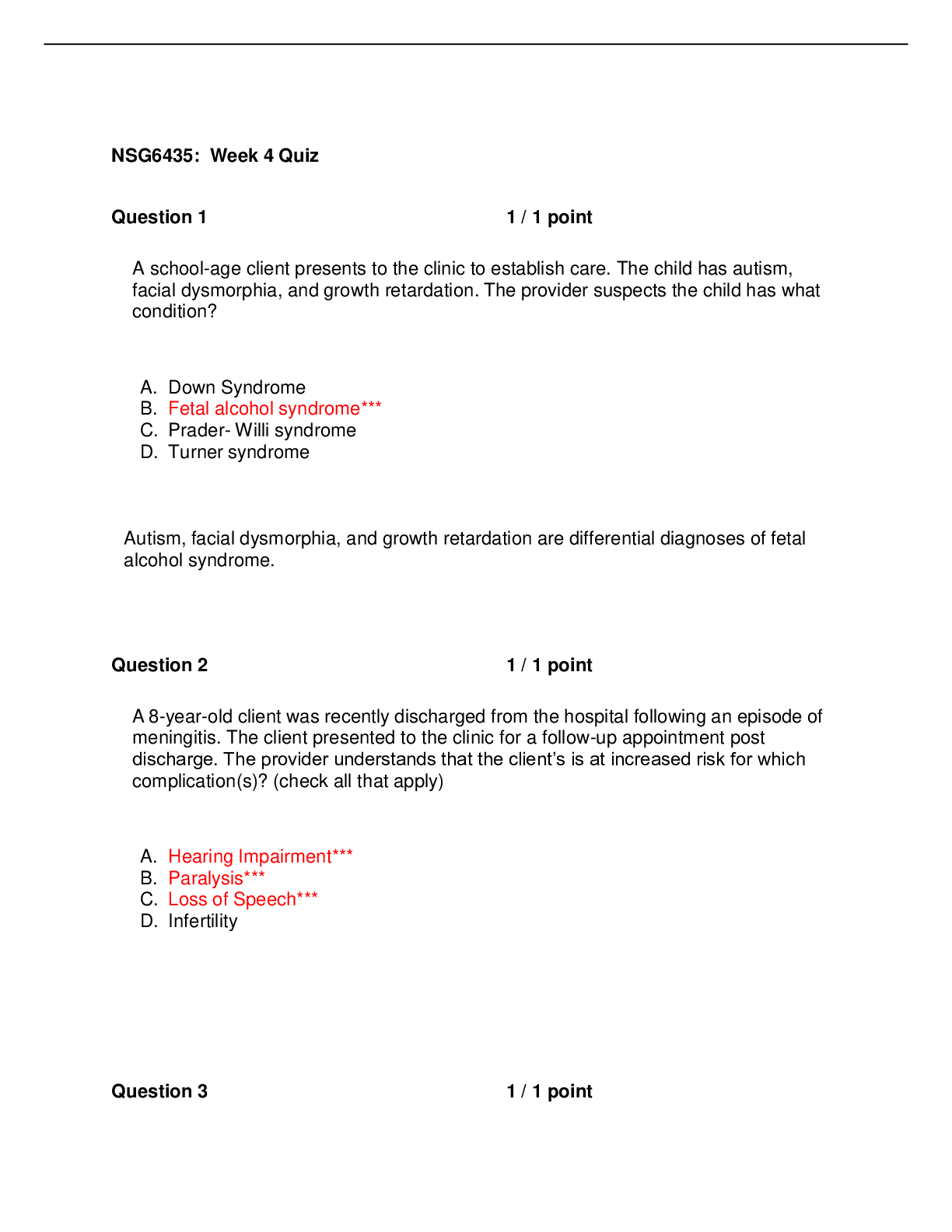
NSG6435: Week 4 QUESTIONS 100%SOLVED CORRECTLY
$ 6.5
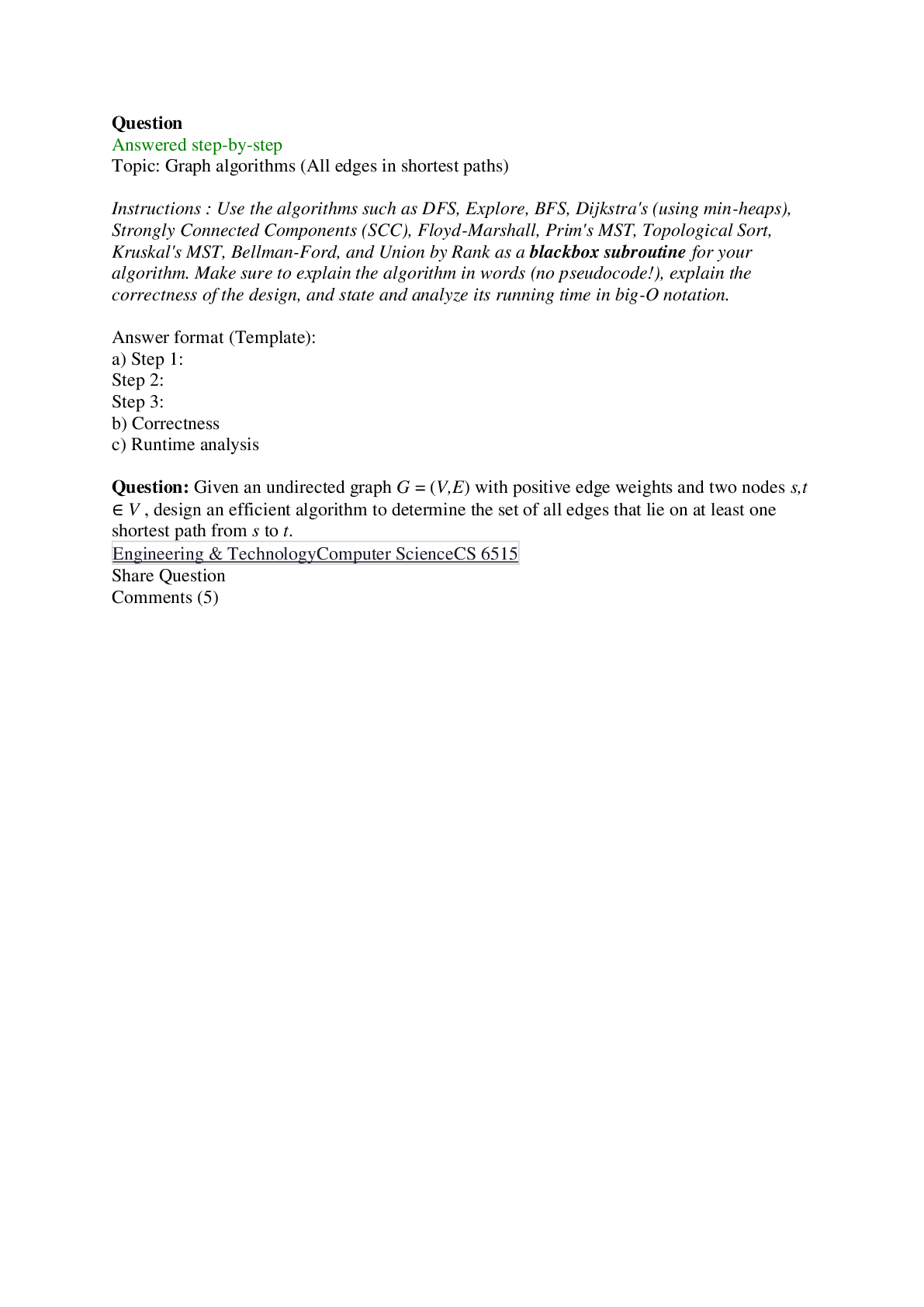
Science Physics Solve the following problems: 1. A bar of gold measures 0. 15m x 0.050m x 0.50m. How many gallons of water have the same mass as this bar? 2. A full
$ 7
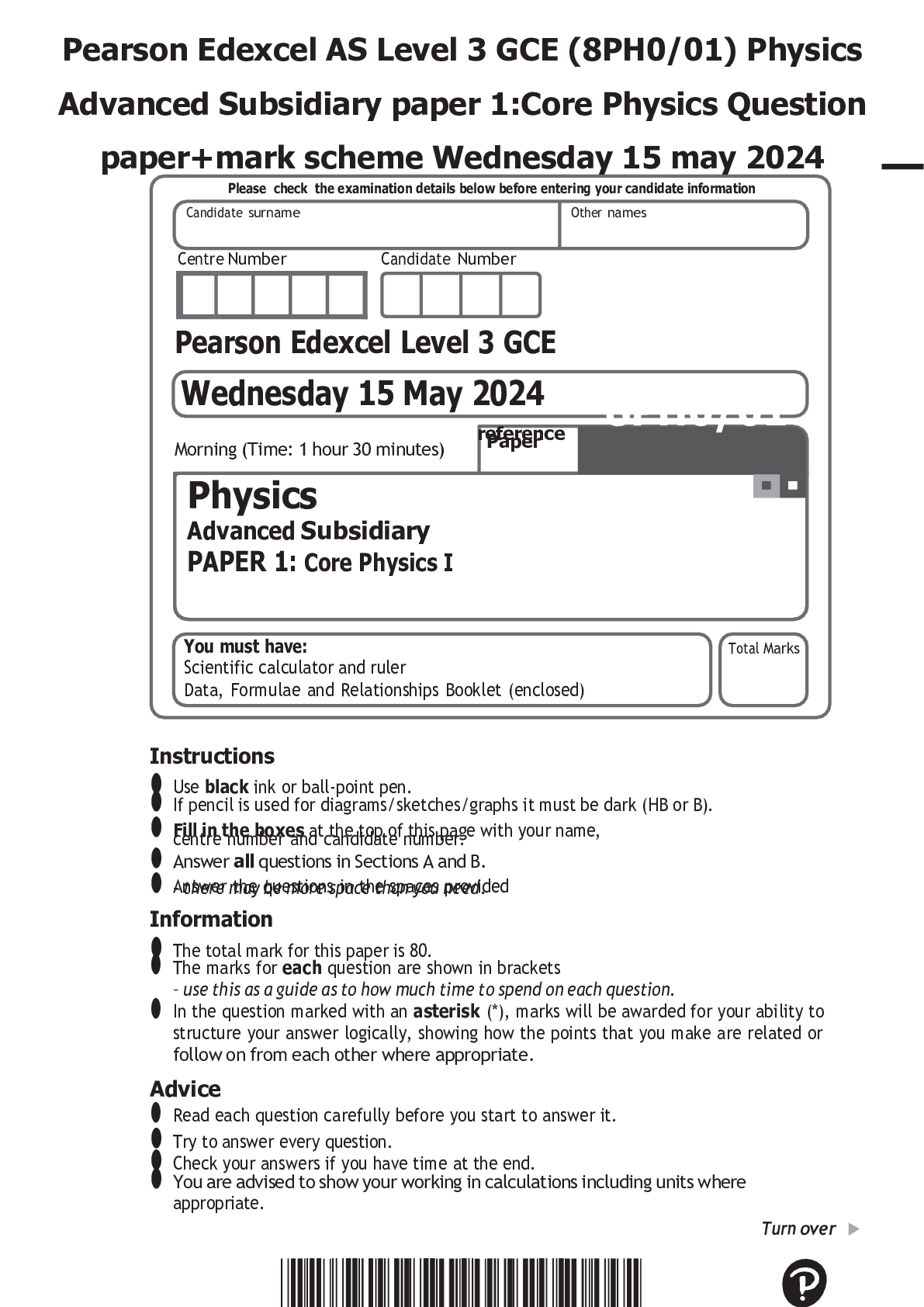
Pearson Edexcel AS Level 3 GCE (8PH0/01) Physics Advanced Subsidiary paper 1:Core Physics Question paper+mark scheme Wednesday 15 may 2024
$ 7

MAN 4720 FINAL EXAM (CAPSTONE UCF) MULTIPLE QUESTIONS AND ANSWERS RATED A.
$ 15
.png)
Pearson Edexcel GCE In Arabic (9AA0_01) Mark Scheme (Results)OCRPaper 1: Translation into English, Reading Comprehension and Writing (research question) in ArabicOCRAutumn 2020
$ 8

Radiology Review Manual 8th Edition by Wolfgang F. Dahnert MD (Author) Complete South Asian Edition.
$ 19

Lab Experiment > CHEMISTRY 11101 Lab Report#2: this lab was to estimate Avogadro’s number using stearic acid.
$ 9

USPS Exam 421 SSA Academy
$ 9

INTRODUCTION TO ACCOUNTING 1/ PRINCIPLES OF ACCOUNTING | Download for quality grades |
$ 4

ISYE 6501 GT Students and Verified _ Midterm Quiz 1 with complete solution Latest
$ 10
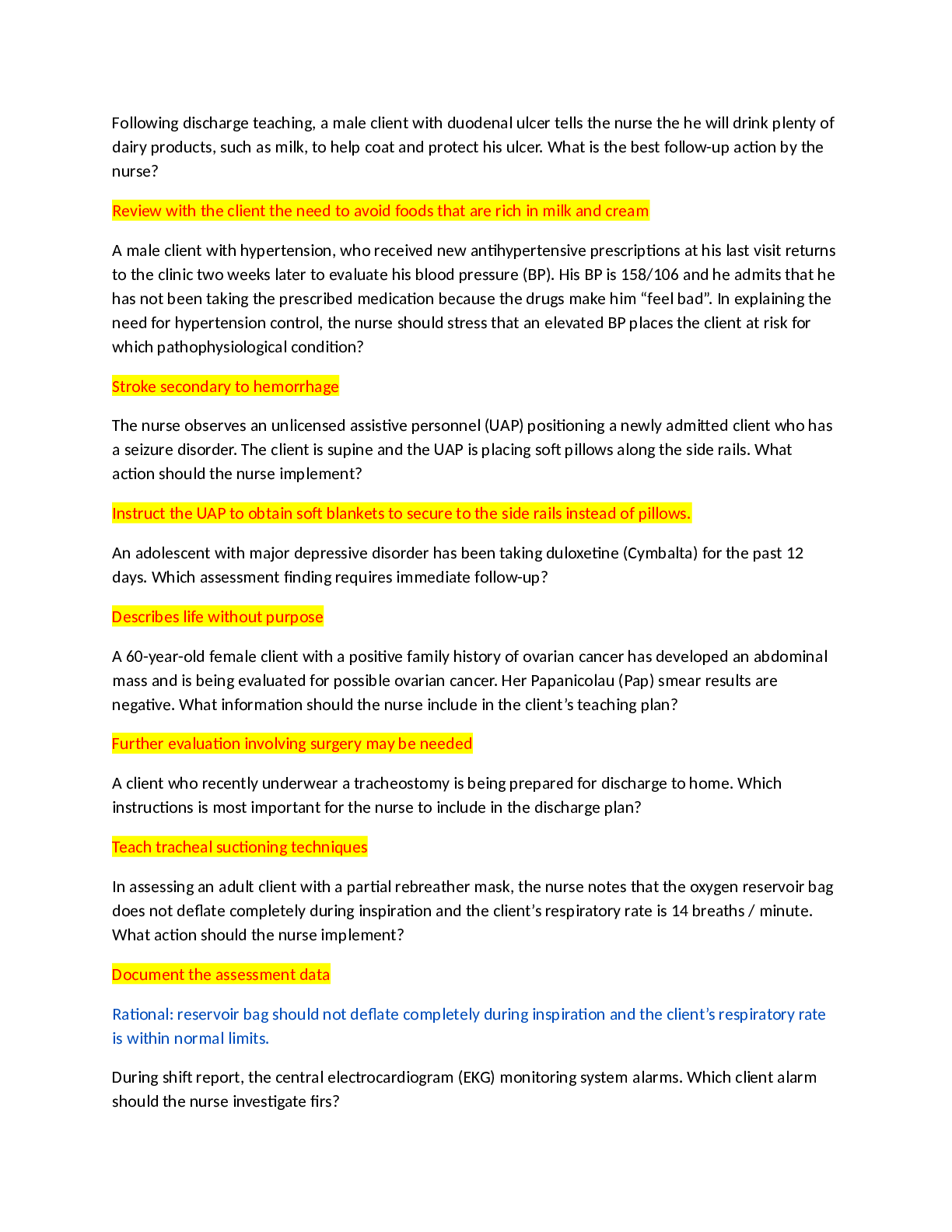
HESI RN EXIT EXAM V1_V7 Exam Elaborations Questions and Answers
$ 13
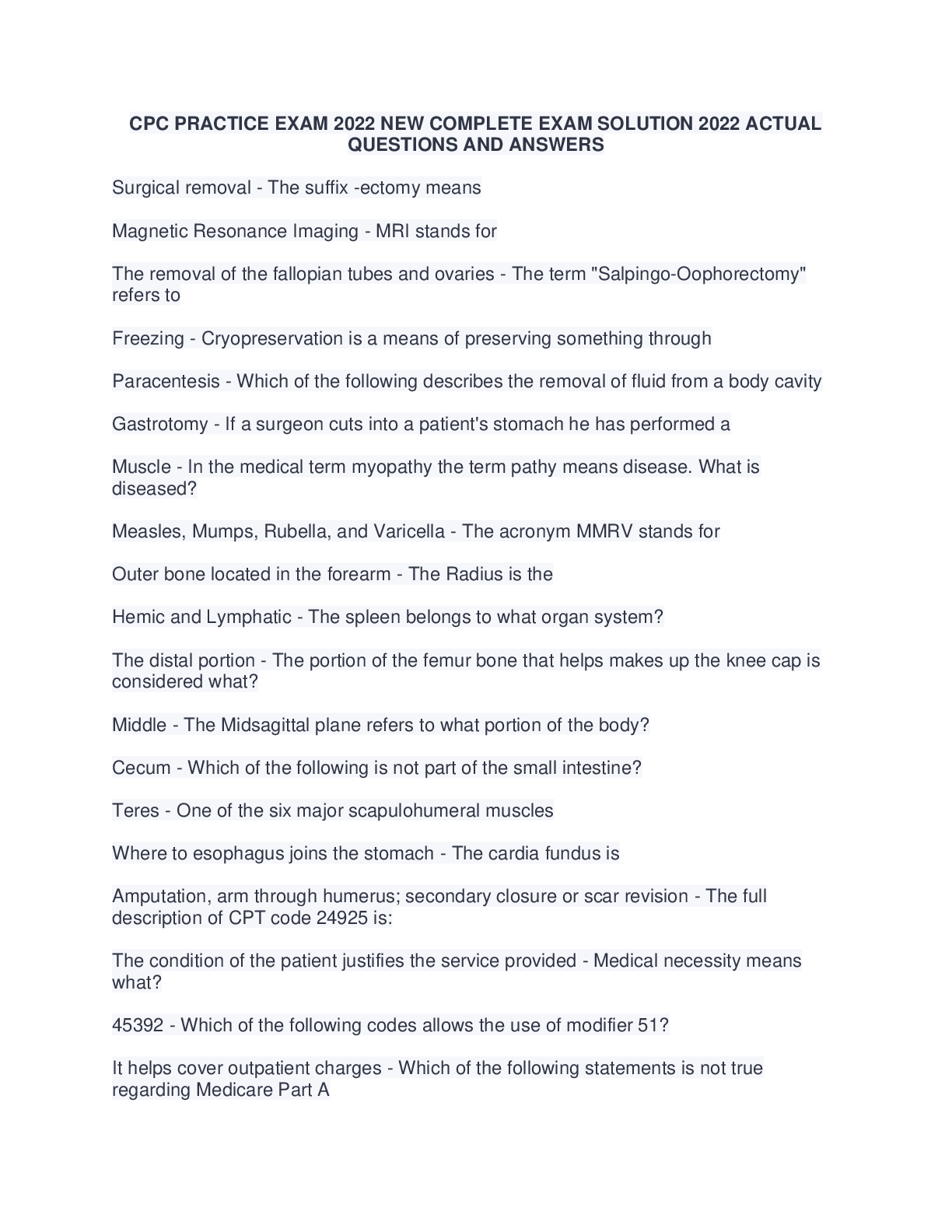
CPC PRACTICE EXAM 2022 NEW COMPLETE EXAM SOLUTION 2022 ACTUAL QUESTIONS AND ANSWERS
$ 10
.png)
Defense Acquisition University ACQ 202 Int Systems Acquisition Module 6 test
$ 9

Fluid Mechanics for Chemical Engineers 4th Edition By Noel de Nevers [TEST BANK]
$ 25

Pearson Edexcel International GCSE Mathematics A (4MA1) Paper 2H Mark Scheme (Results) January 2021
$ 7

MGT 6311 - Final Exam with 100% Verified, Correct Answers. Latest Update 2024. Guaranteed A+.
$ 18.5
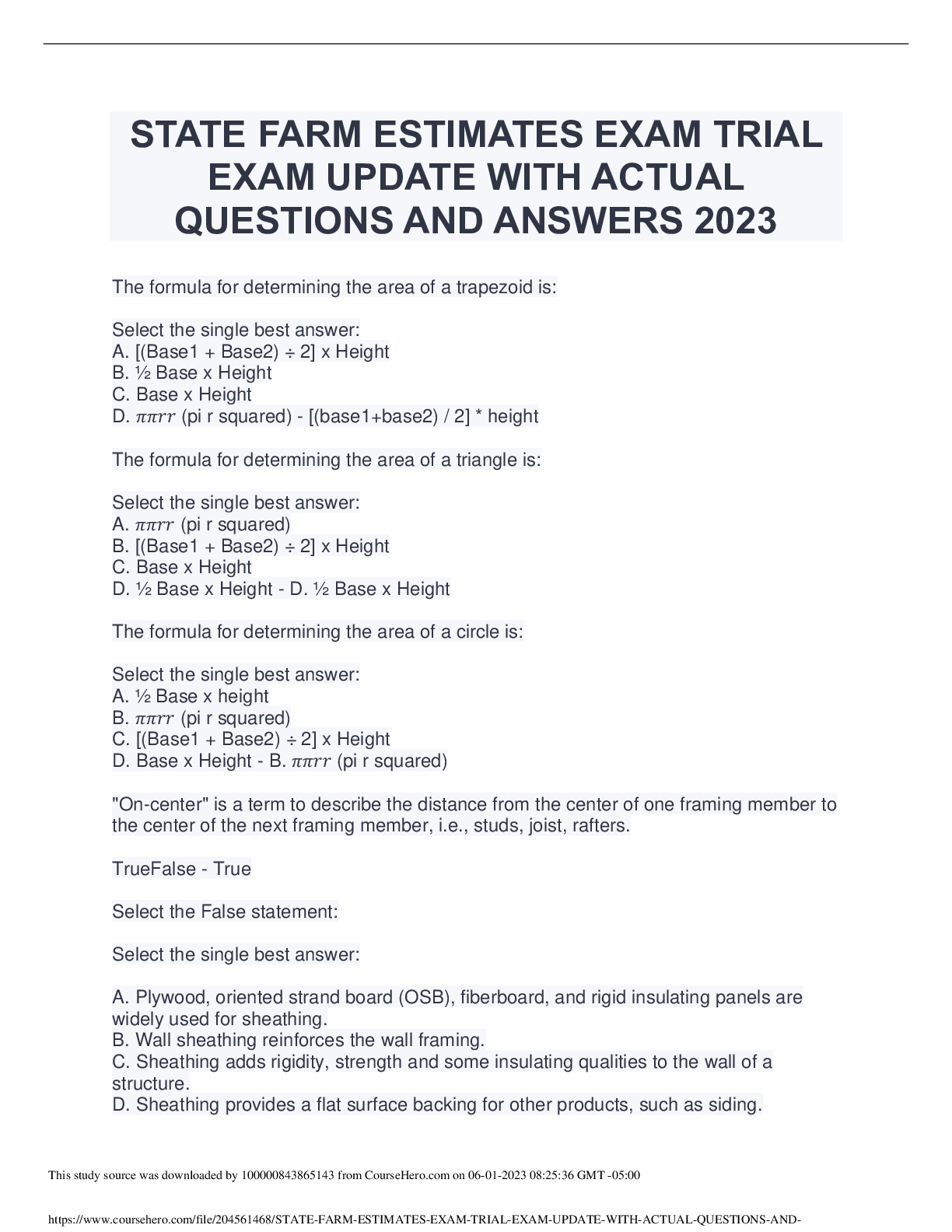
State Farm Estimatics Exam | Actual Exam 2023 (100% Correct Answers)
$ 14
.png)
Practice Test- SHRM CP (questions & answers verified 100% correct answers)
$ 8
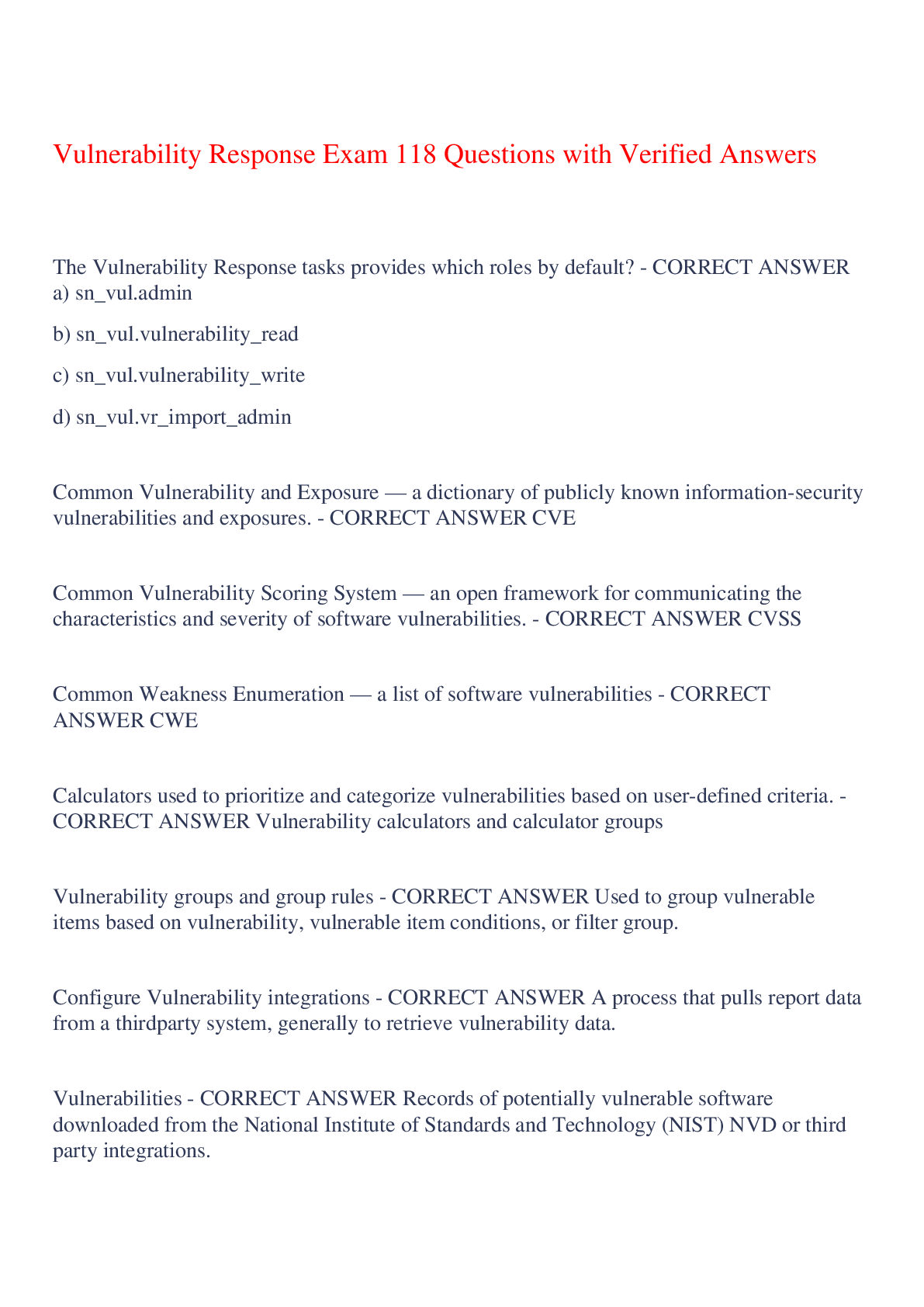
Vulnerability Response Exam 118 Questions with Verified Answers,100% CORRECT
$ 11

NUR 2356 / NUR2356: Multidimensional Care I Exam 1 . Rasmussen College
$ 19.5
.png)
Robot Modeling and Control First Edition Mark W. Spong, Seth Hutchinson, and M. Vidyasagar
$ 17

Amazon Cloud Practitioner Certification exam 2022/2023 with 100% correct answers
$ 9

Test Bank For Financial Accounting with International Financial Reporting Standards, 4th Edition By Weygandt, Kimmel, Kieso (All Chapters 1-15
$ 26
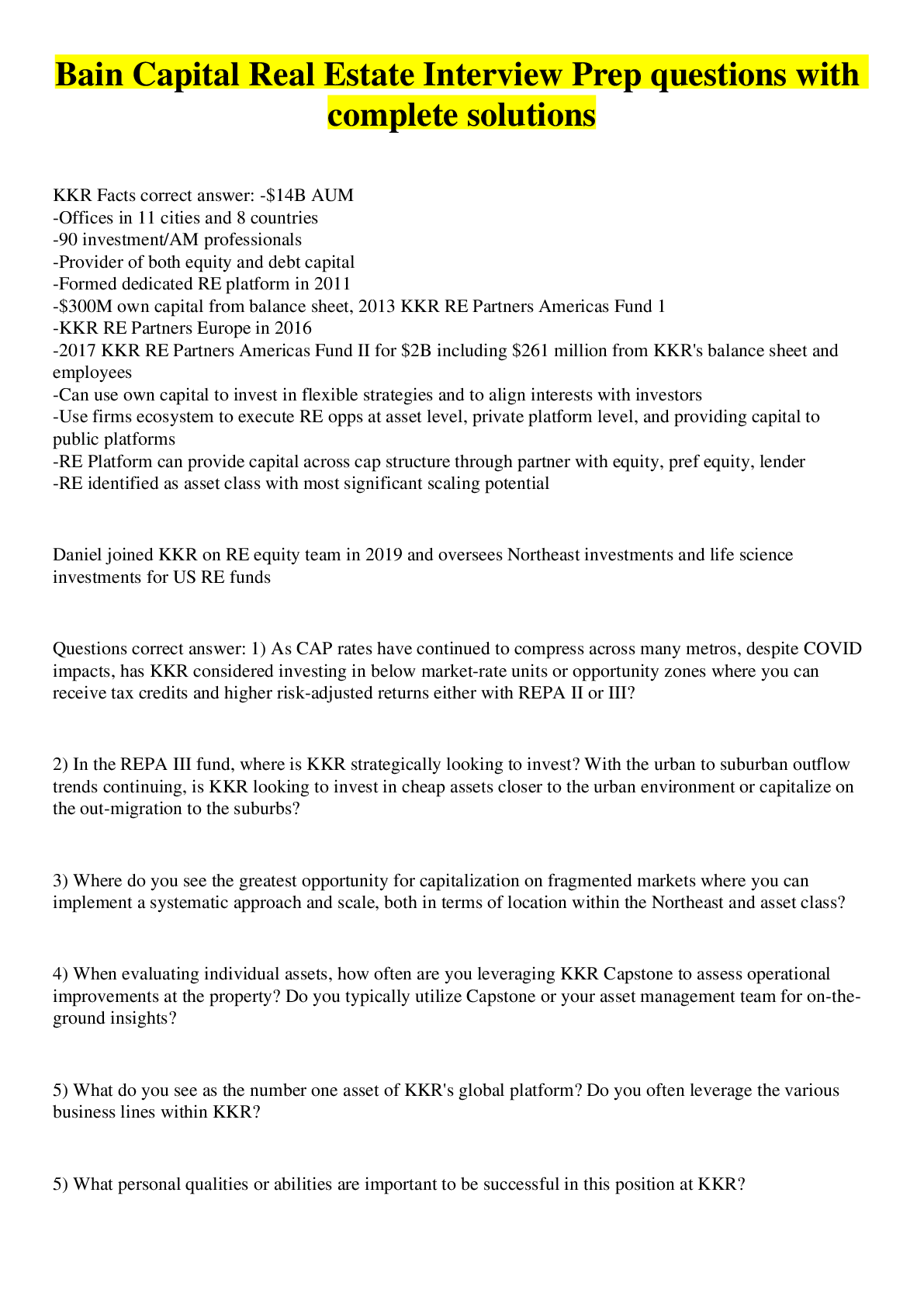
Bain Capital Real Estate Interview Prep questions with complete solutions
$ 10

Discussion 09 Linear Hashing, Sorting, HW3, and Project 3 University of Michigan - EECS 484
$ 8

HESI A2 Critical Thinking Questions and Answers Already Passed
$ 14

BioChem C785 - WGU - Module 1 - All Questions And Answers( With Complete Solution)
$ 11
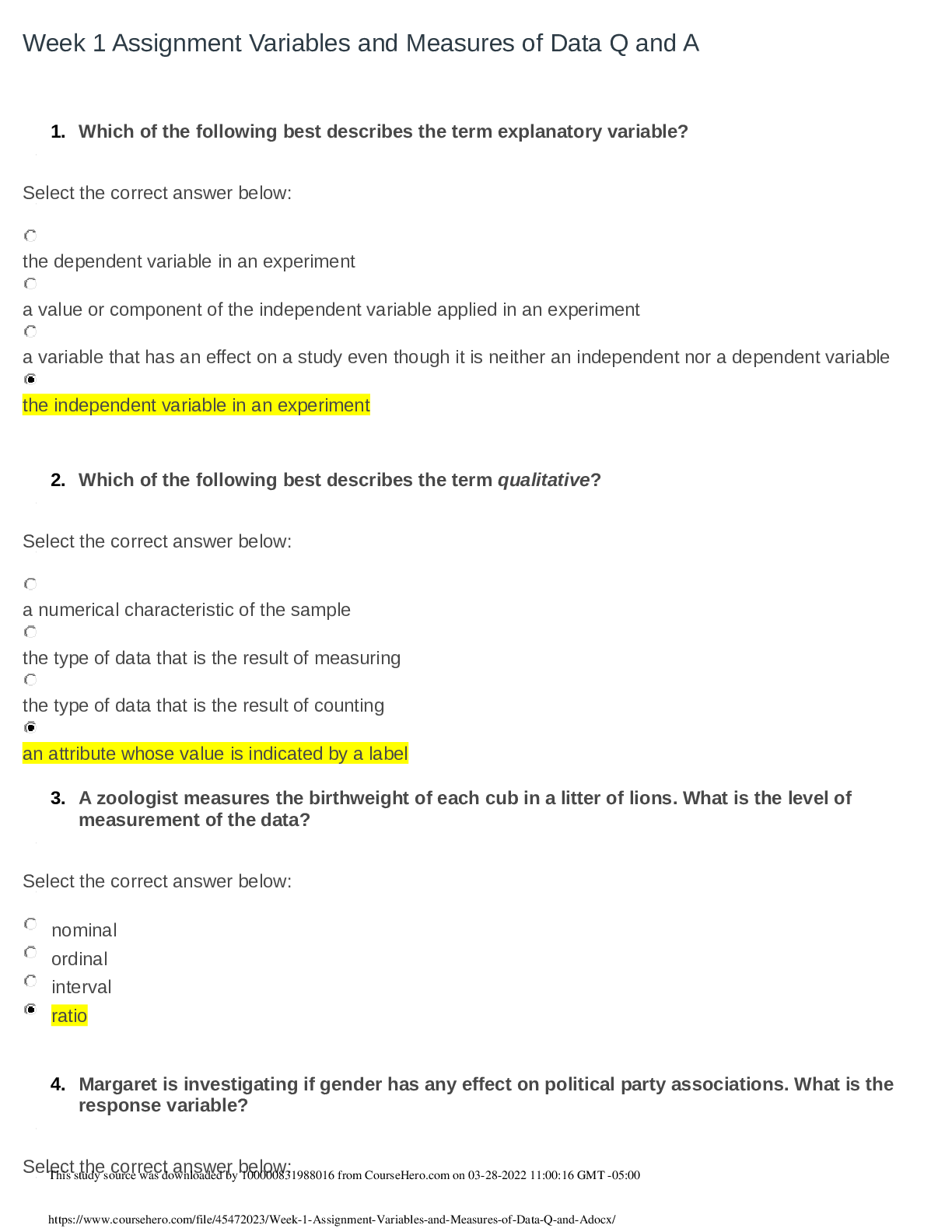
MATH 255N Week 1 Assignment, Variables and Measures of Data - Question and Answers 100% Correct Grade A
$ 9.5

FINA 061 Bloomberg Answers
$ 13
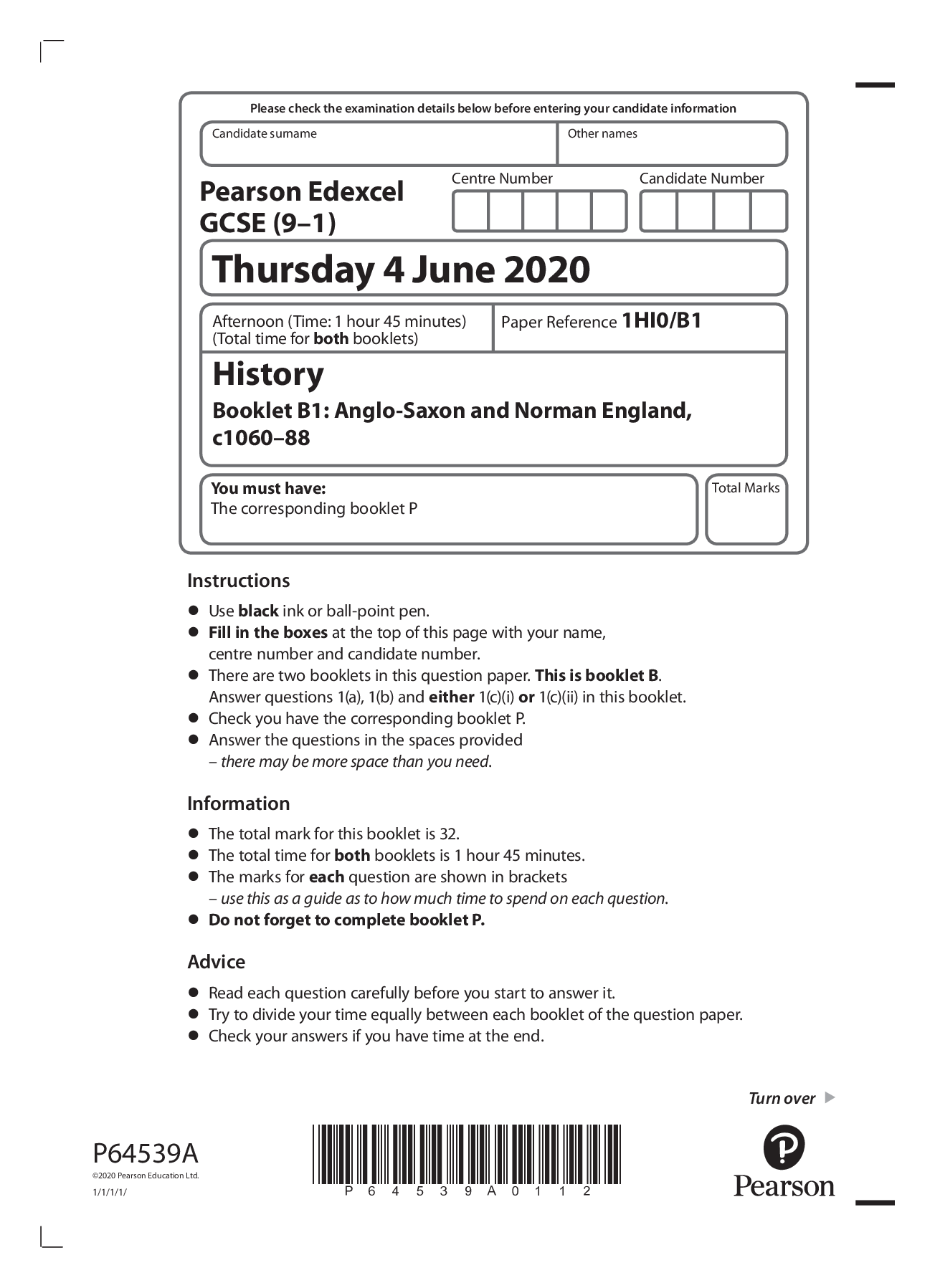
Pearson Edexcel_GCSE (9–1) History_1HI0/B1 Question Paper 2020 | B1: Anglo-Saxon and Norman England, c1060–88
$ 6.5

PHYSIC 101 Forces and motion Lab 2. Includes Answers
$ 13
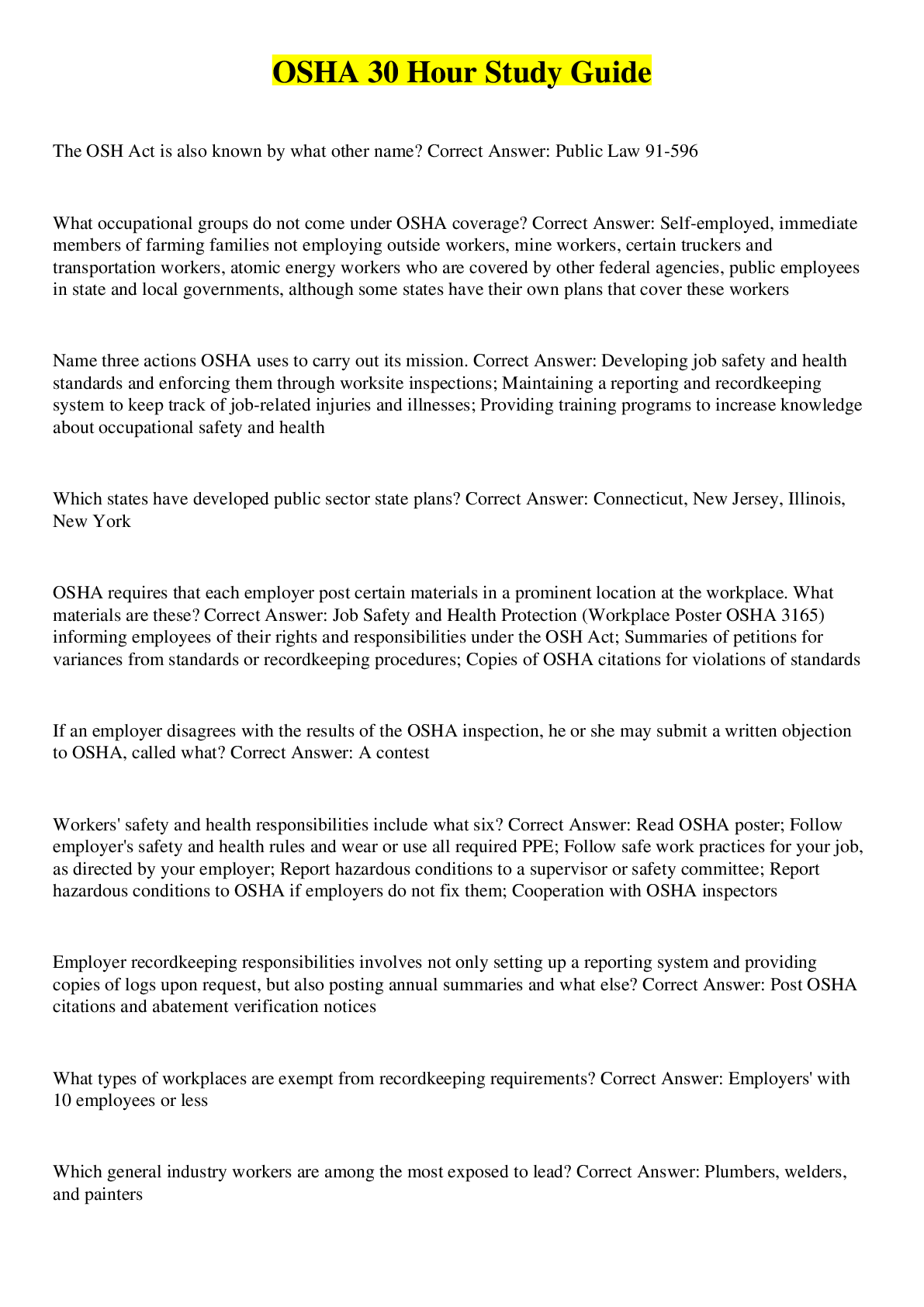
OSHA 30 Hour Study Guide questions with complete solutions
$ 10

MATH 225N Week 6 Assignment Confidence Interval for Mean – Population Standard Deviation Known (A){100%}
$ 9

AHIP - Final Examination Questions And Answers Latest Test 2022
$ 11
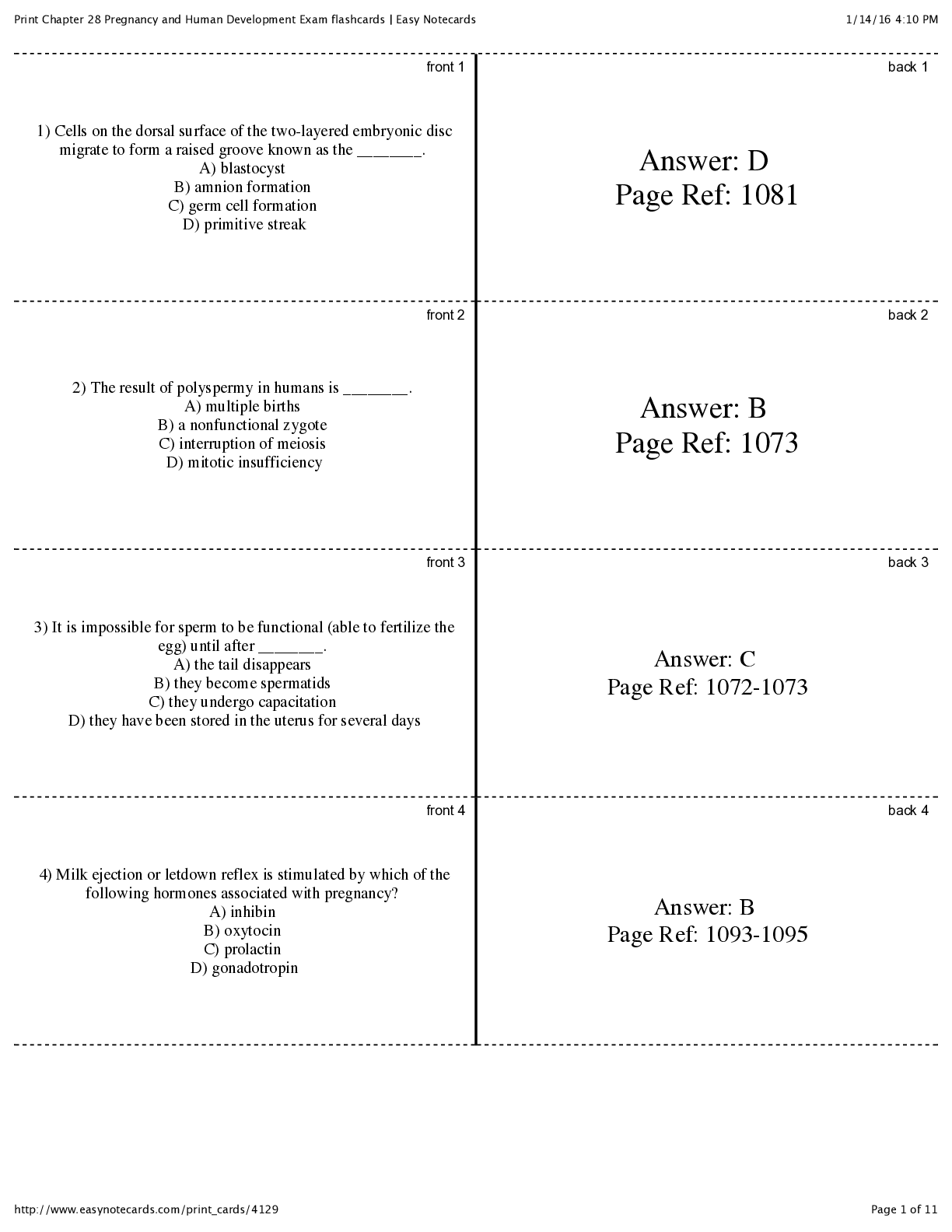
Pregnancy and Human Development Exam | 40 Q&A
$ 10
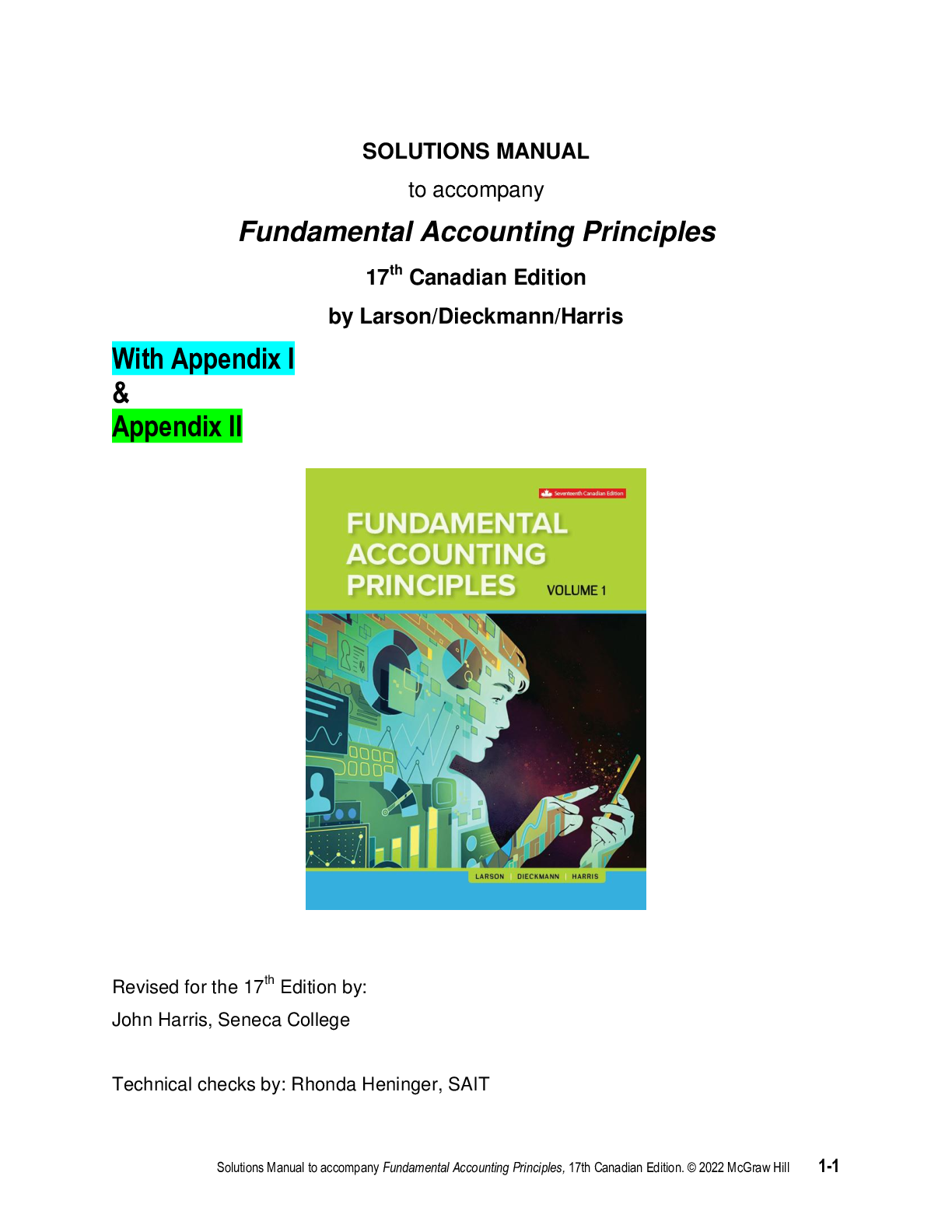
Fundamental Accounting Principles Volume 1 17th Canadian Edition By Kermit Larson, Dieckmann, John Harris | Solution Manual
$ 22

EDEXCEL A LEVEL ENGLISH LITERATURE 2022 QUESTION PAPER 3
$ 2

SHRM-CP Practice Exam Questions | 139 Questions with 100% Correct Answers)
$ 9
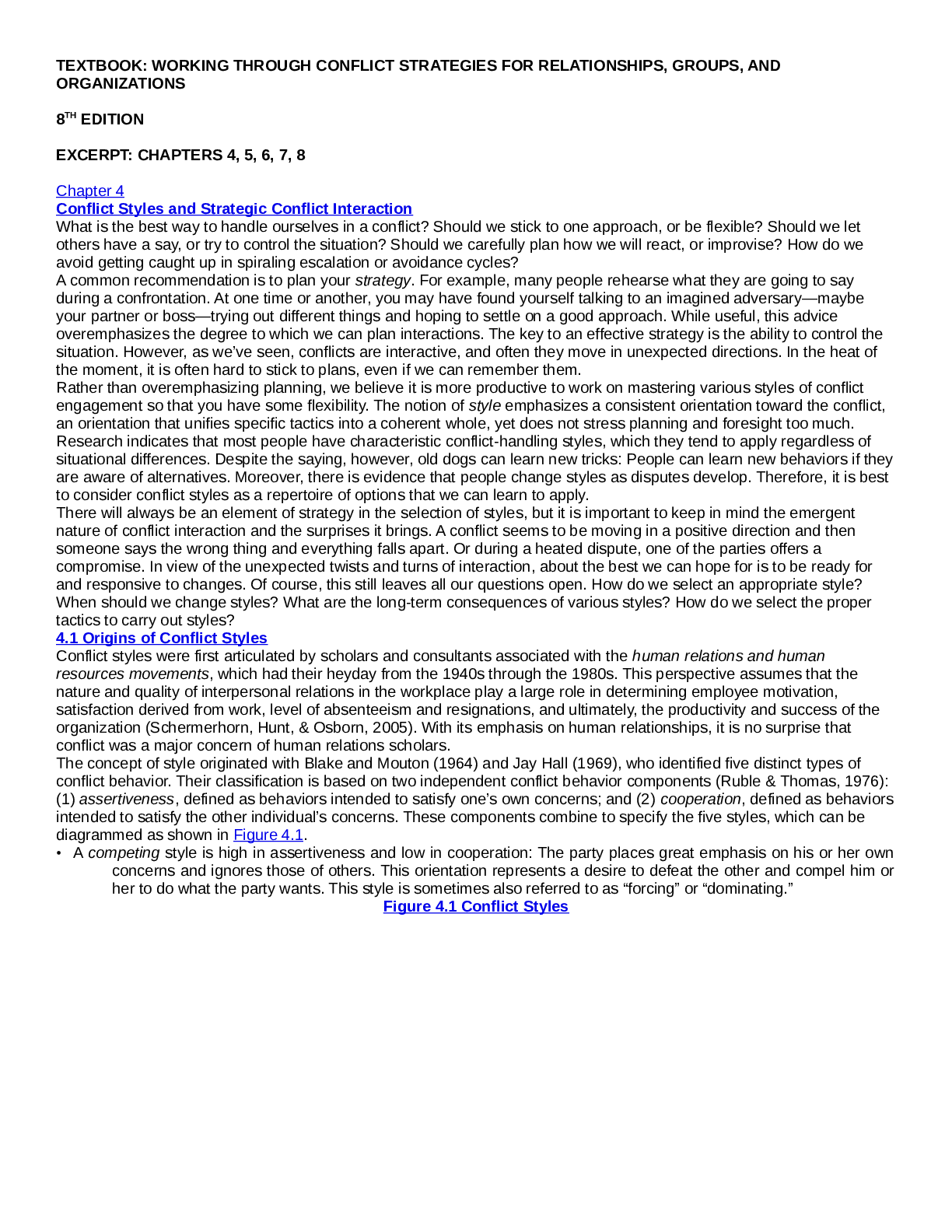
AHSC335FINAL EXAM_TEXTBOOK CHAPTERS 4 5 6 7 8_fall2018[graded A+]
$ 7.5

Test Bank For Quick & Easy Medical Terminology, 10th Edition by 2024 Peggy C. Leonard Chapter 1-15
$ 19
.png)
RPA 1: Assignment 1 Questions and Answers 100% Correct
$ 7

Geological Processes Activity 3 Earthquake ( questions with complete solution)
$ 7
.png)
WGU C464 - Intro to Communication - Unit 2: Basics of Communication Questions and Answers Already Passed
$ 5
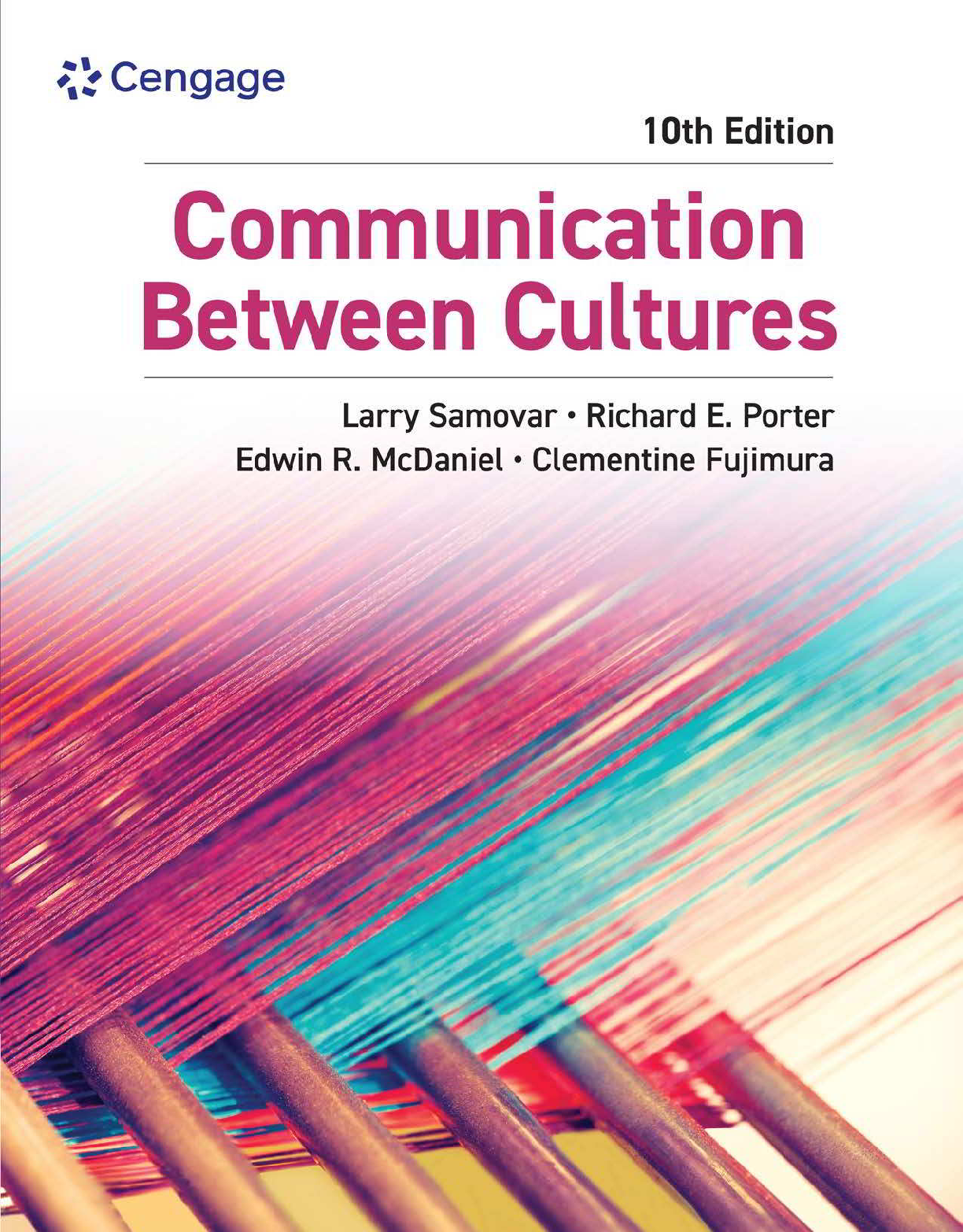
[eTextbook] [PDF] Communication Between Cultures 10th Edition By Larry Samovar
$ 29

ENGG 3390 Signal Processing lab 4 - University of Guelph ENGG 3390
$ 5

CNOR TEST EXAM QUESTIONS WITH CORRECT ANSWERS ALL SOLVED SOLUTION 2022
$ 13.5
.png)
G2_IST321_Group2_Assignment 5 - Cleveland State University IST 321
$ 4
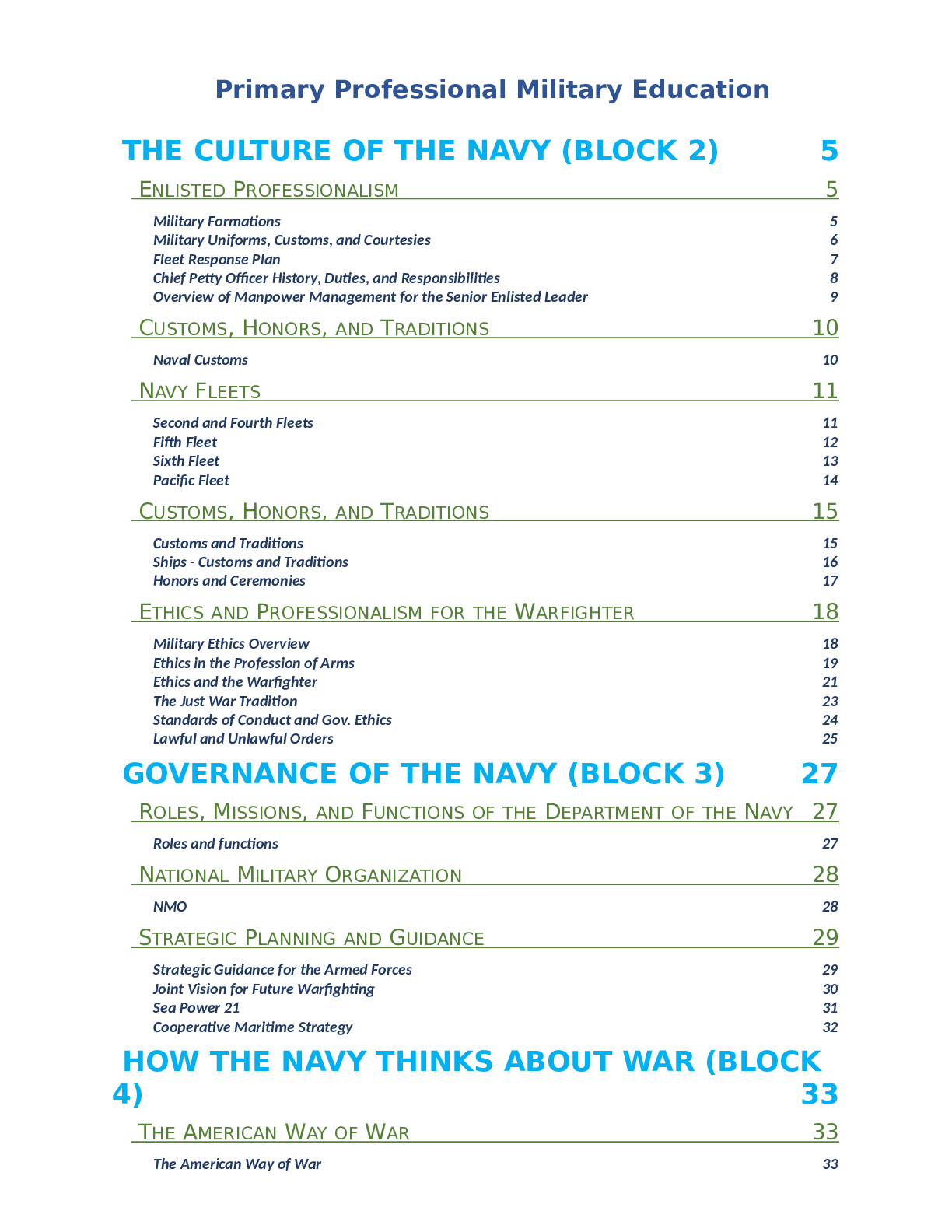
Primary Professional Military Education
$ 7

eBook Mathematizing Children's Literature Sparking Connections, Joy, and Wonder Through Read-Alouds and Discussion 1st Edition By Allison Hintz , Antony T. Smith
$ 29

PDF(eBook) Introduction to Statistics and Data Analysis 6th Edition by Roxy Peck , Chris Olsen,Tom Short
$ 27

CLC 222 Mod 5 Contract Monitoring and Documentation and Handling Issues Exam
$ 10
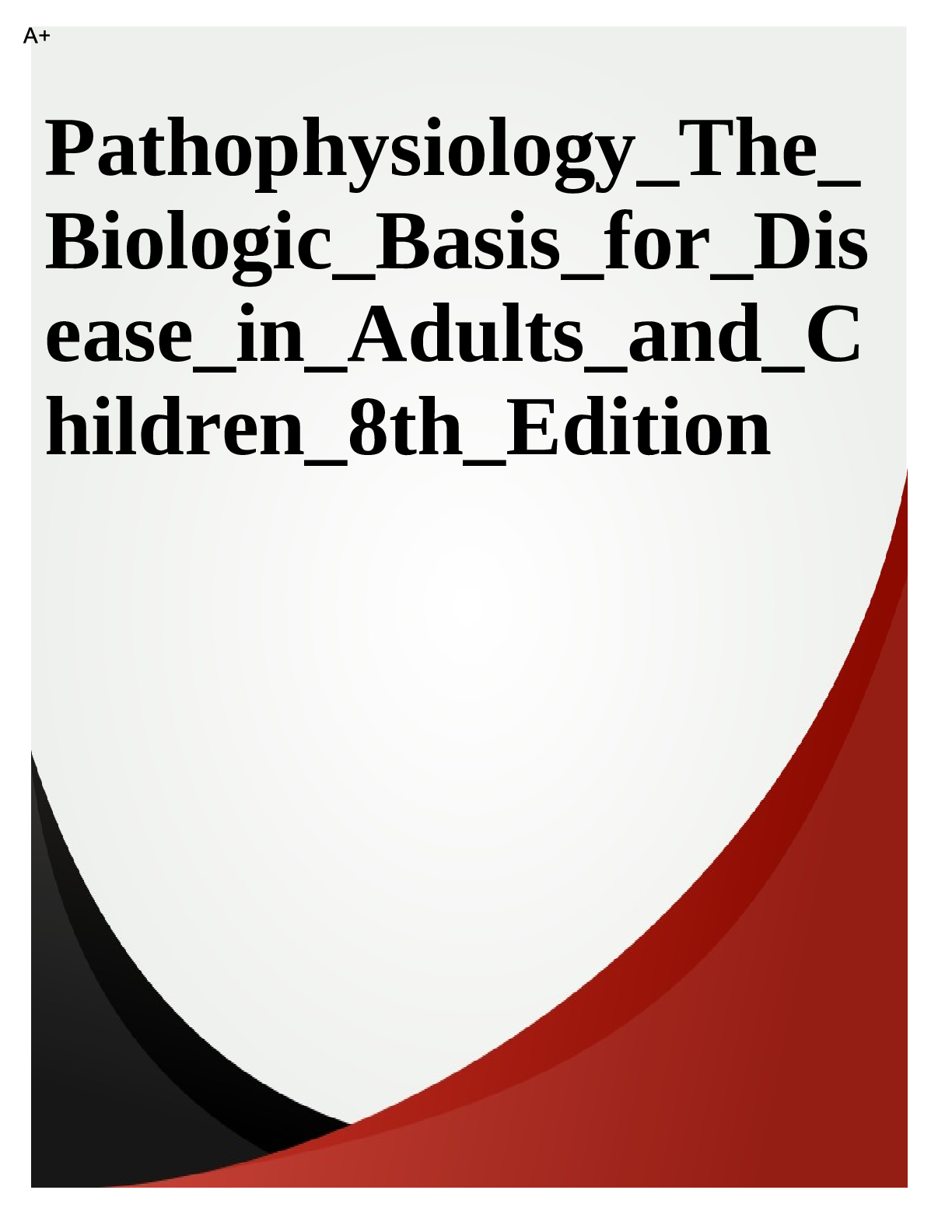
Pathophysiology The Biologic Basis for Disease in Adults and Children 8th Edition
$ 19.5

iHuman case Andrew Chen. He is a 14-year-old boy with a chief complain of pain and swelling in the right ankle(WITH all the questions, test, differential diagnosis) 2023/2024
$ 6.5

Computer Applications / EXAM / 100% CORRECT ANSWERS
$ 10
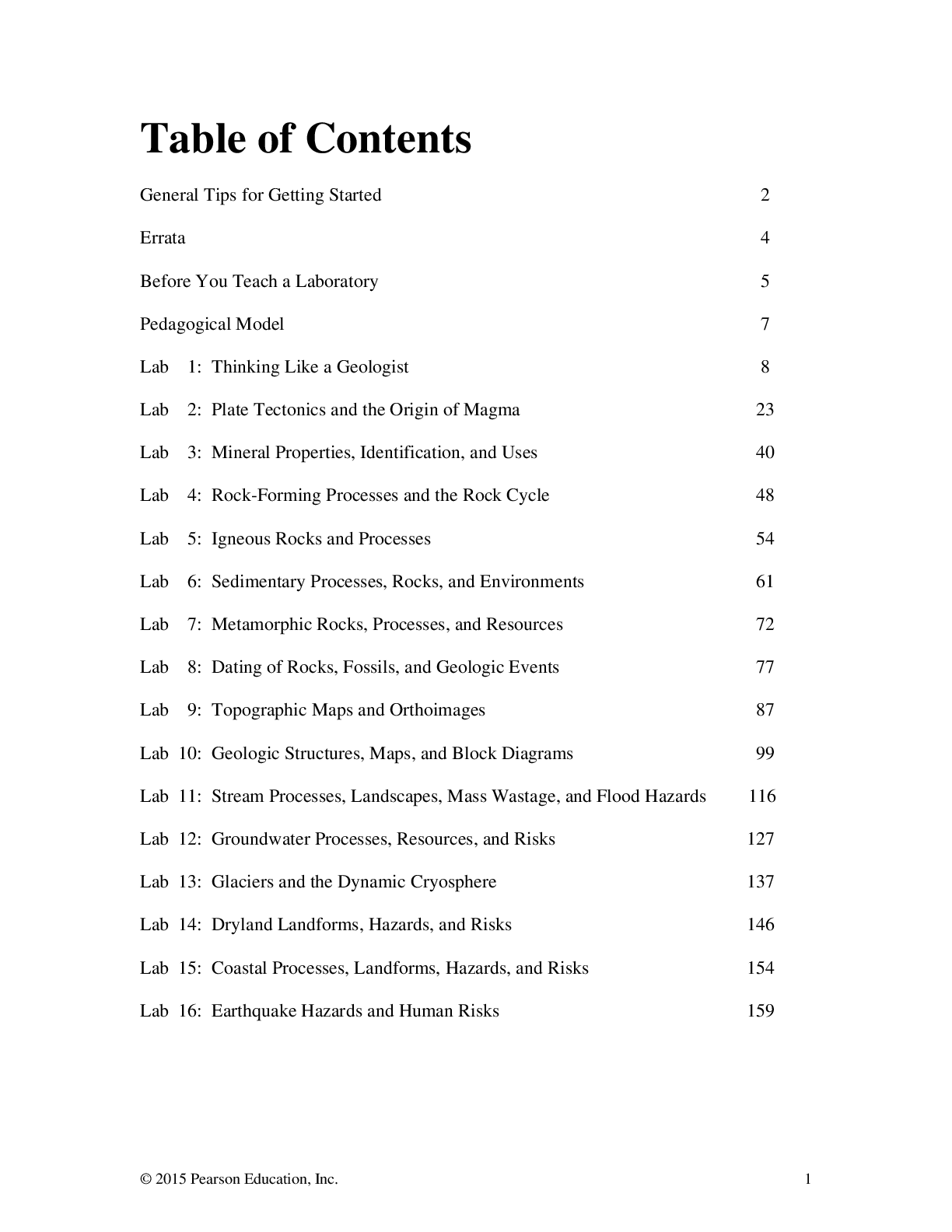
AGI/NAGT (10th edition) and this Instructor Manual more effectively
$ 12

Actual 2024 AQA A-level GEOGRAPHY 7037/2 Paper 2 Human geography Merged Question Paper + Mark Scheme + Insert
$ 7
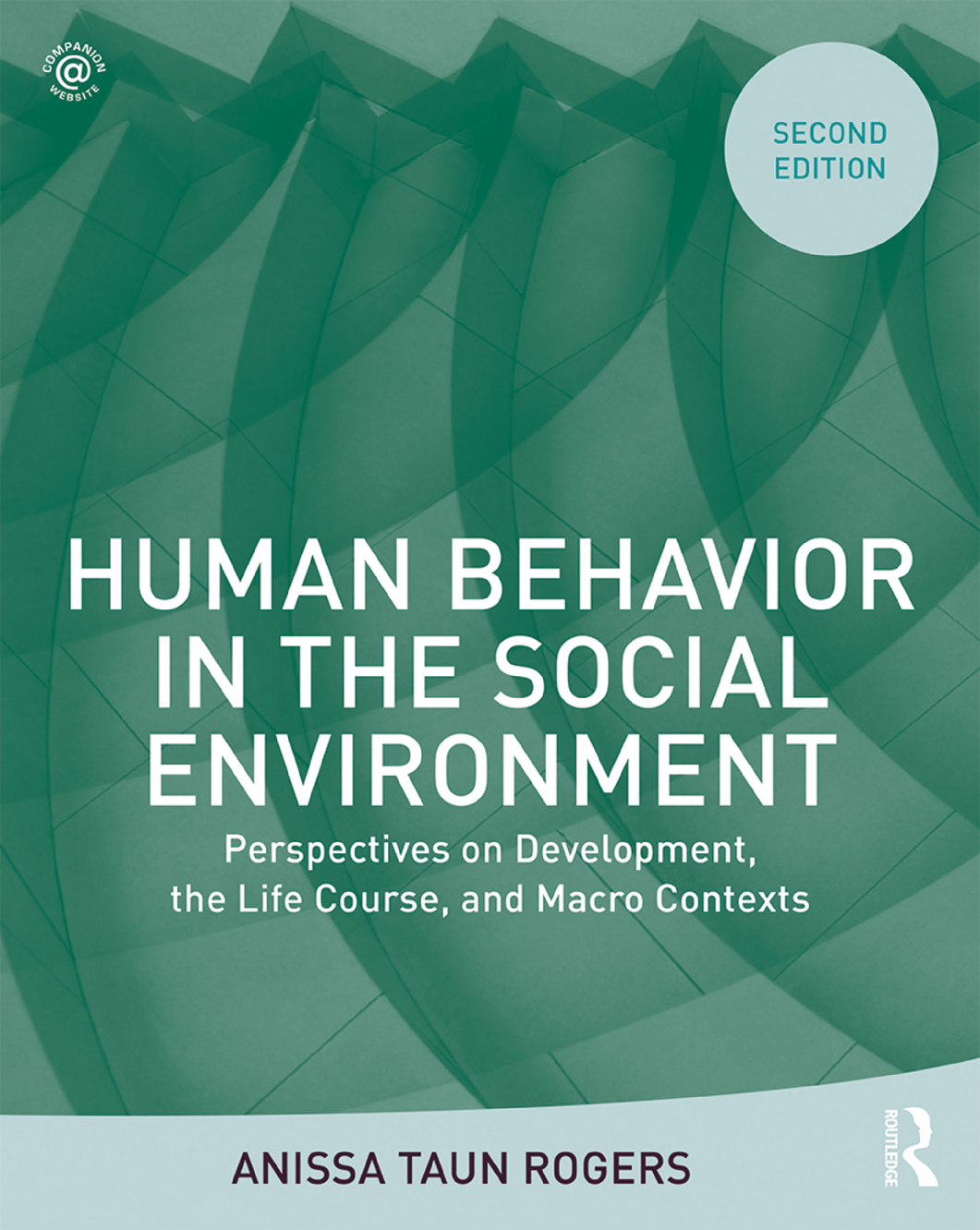
eBook PDF Human Behavior in the Social Environment Perspectives on Development the Life Course and Macro Contexts 2nd Edition By Anissa Rogers
$ 30

Online Lab Longitudinal Waves Gizmo | All answers are 100% correct | 8 pages
$ 7
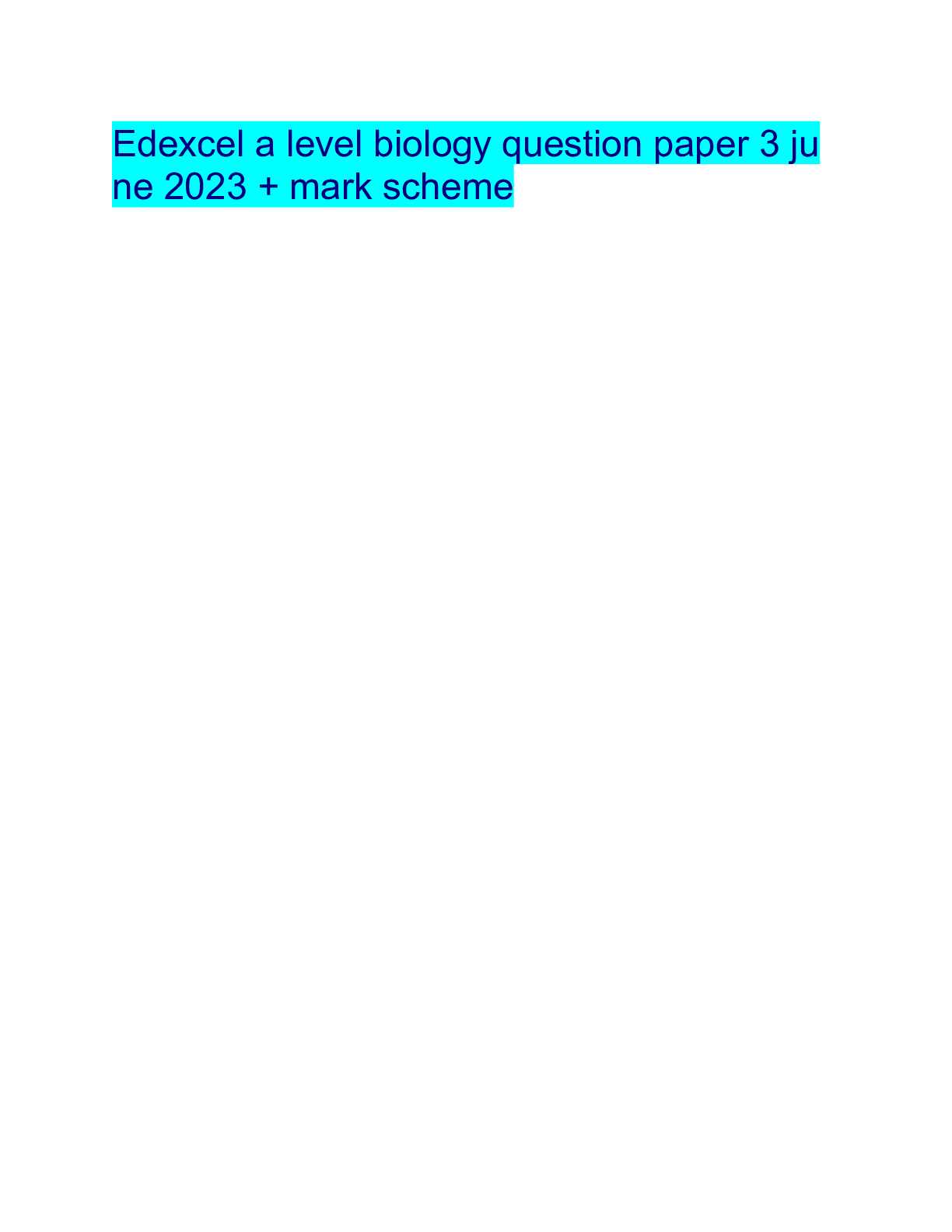
Edexcel a level biology question paper 3 ju ne 2023 + mark scheme
$ 8

Agile Exam Questions and Answers 2022
$ 16

AQA_A Level Physics_7408/2 Question Paper_2019 | Paper 2
$ 7

Zuku Navle Study Prep Exam With Quizs and Answers
$ 8

French GCSE Reading & Listening Revision Booklet 2020/2021
$ 10

LSK3701 / Score 100% / New 2025 Version / Oct-Nov 2021 Exam Paper – Questions & Answers
$ 6
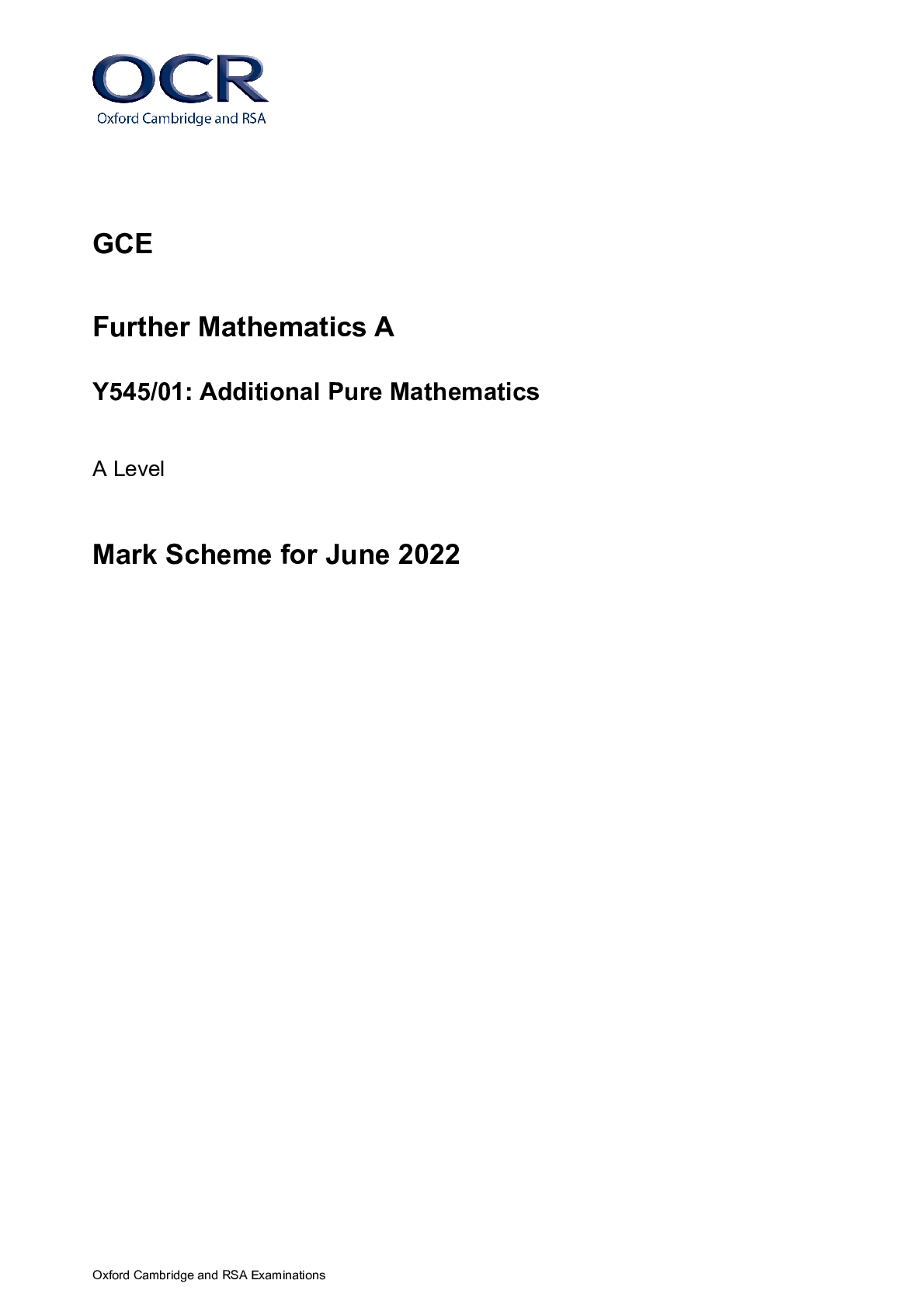
OCR A LEVEL 2022 FURTHER MATHS A MARK SCHEME ADDITIONAL PURE MATHS
$ 3

EDEXCEL ALEVEL 2022 BIOLOGY A QUESTION PAPER 2
$ 3

ASWB Exam 2019 Practice Test (51-100). Questions and answers. 100% predictor quizzes.
$ 8

SOPHIA PATHWAY Sophia - Environmental Science - Practice Unit 1 Milestone 1. CORRECT ANSWERS HIGHLIGHTED IN YELLOW.
$ 9.5
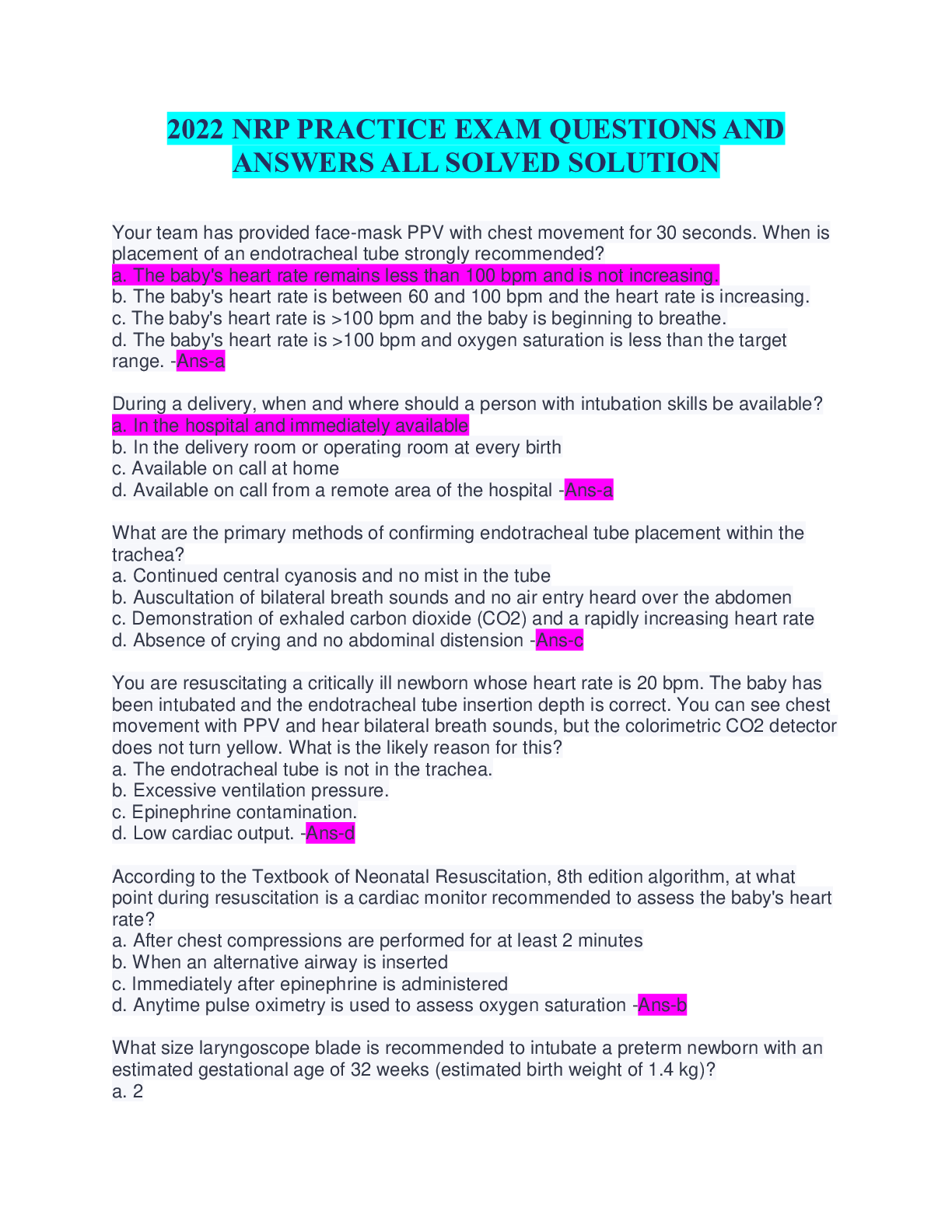
2022 NRP PRACTICE EXAM QUESTIONS AND ANSWERS ALL SOLVED SOLUTION
$ 9

WGU - C857 - Software Quality Assurance (definitions) Latest 2022 100% Pass
$ 7

NR 511 MIDTERM EXAM 2025 WITH 350+ REAL QUESTIONS AND WELL-VERIFIED ANSWERS | ALREADY GRADED A+ | GUARANTEED PASS | NR 511 ACTUAL EXAM LATEST 2025 [BRAND NEW]
$ 22.5

eBook PDF Theoretical and Computational Fluid Mechanics Existence, Blow-up, and Discrete Exterior Calculus Algorithms 1st Edition By Terry E. Moschandreou, Keith Afas, Khoa Nguyen
$ 20

Language_culture_and_communication_7th_edition_by_bonvillain_test
$ 15
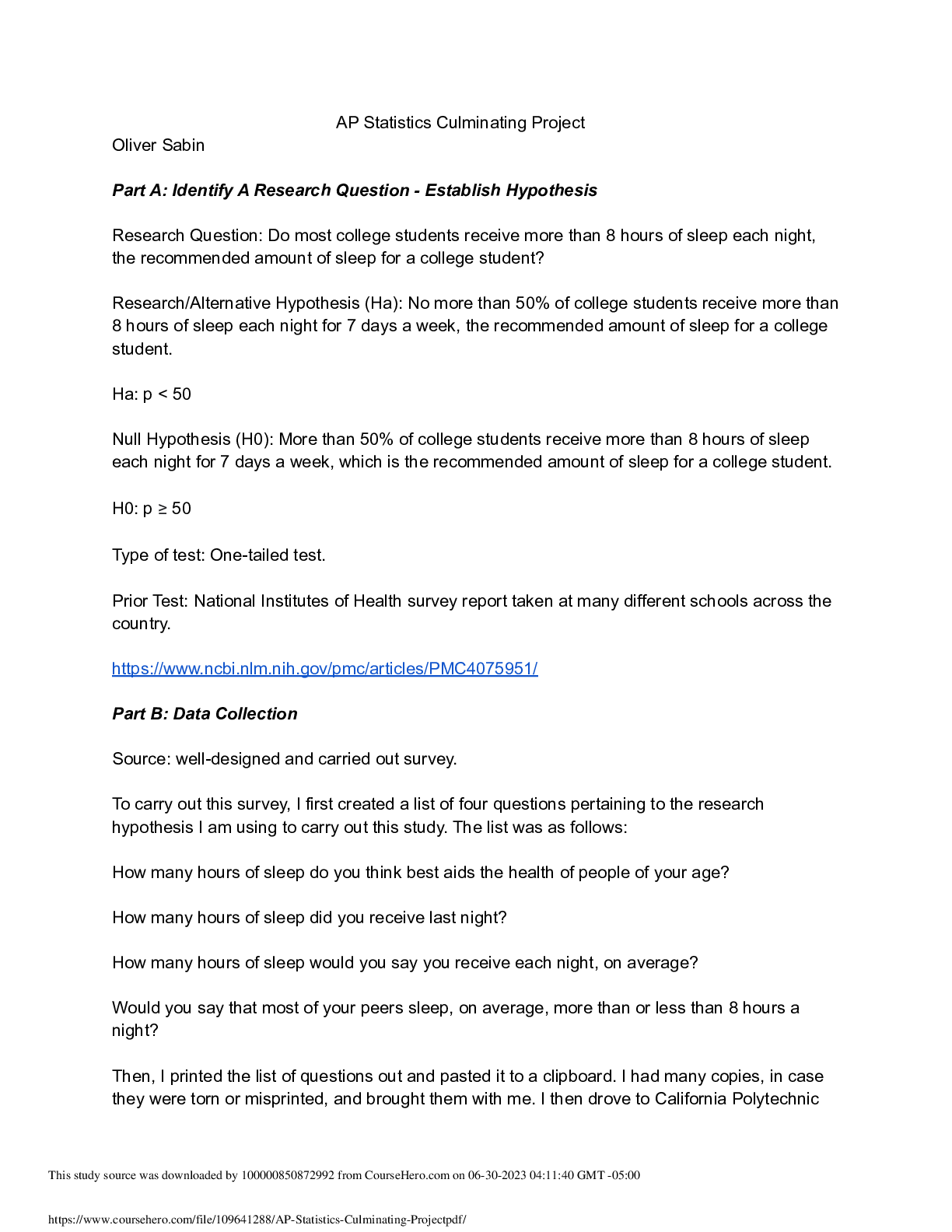
AP Statistics Culminating Project
$ 6.5

AQA AS Accounting 7126 Analysis and evaluation of financial information Answers and Commentaries. 2021 Assessment Resources
$ 7
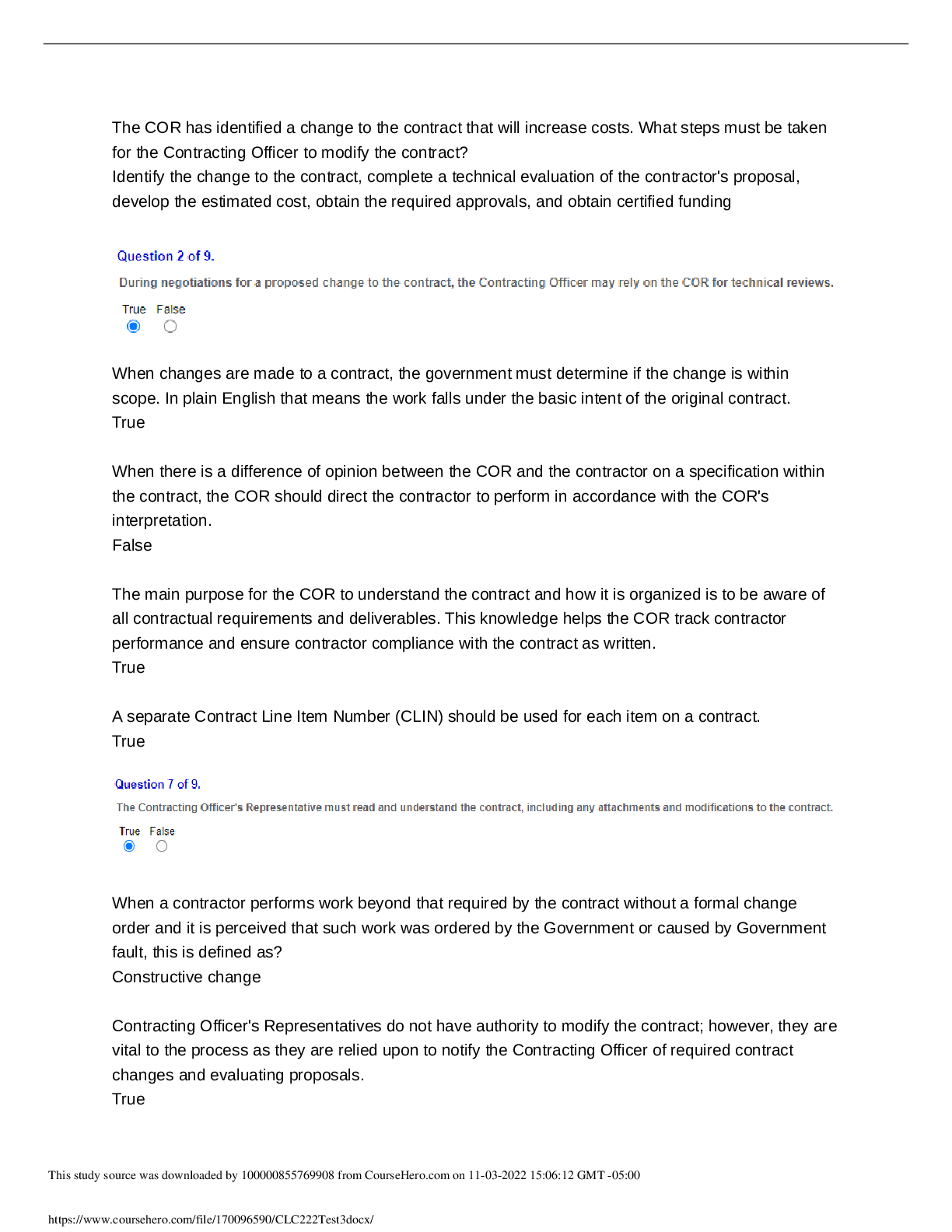
CLC 222 (COR) Training Test 3. Q&A | Defense Acquisition University
$ 6

BIOL 102 Principles of Human Biology 2022 Fall 2022 BIOL 102 LUO - Review Test Submission: Quiz 1 :Skeletal and Muscular Systems
$ 10

HESI EXIT RN EXAM 2019 V1-V7 - Questions and Answers, download to ace your grade
$ 9

CS566_Final_Exam Boston University MET CS 566
$ 7
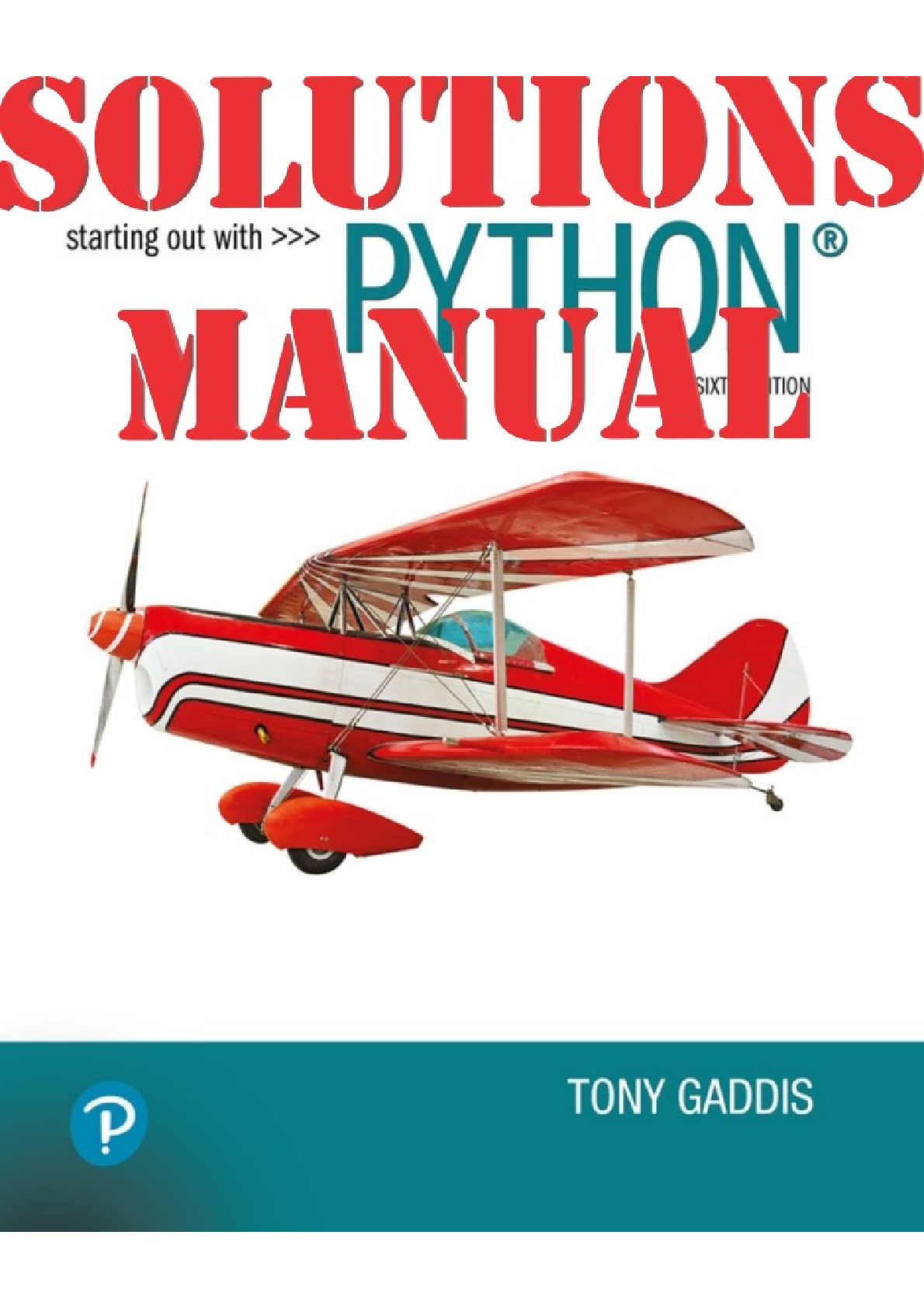
Starting Out with Python, 6th Edition by Tony Gaddis | SOLUTIONS MANUAL
$ 24

📘 BCBA Exam Solution Guide ( ) – Cooper, Heron & Heward 📘

.png)
.png)

.png)
.png)
.png)
.png)
.png)

.png)
.png)
.png)
.png)
